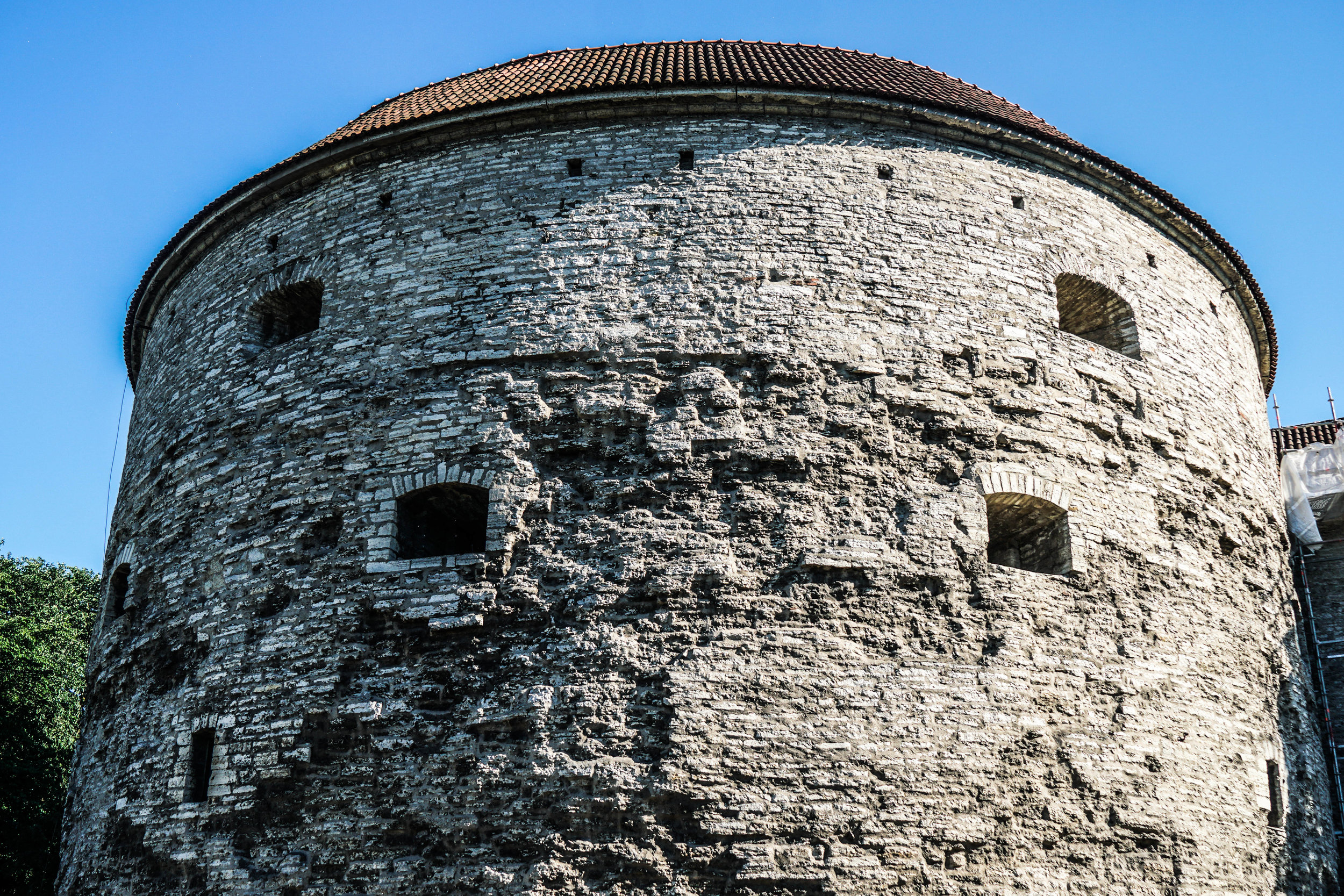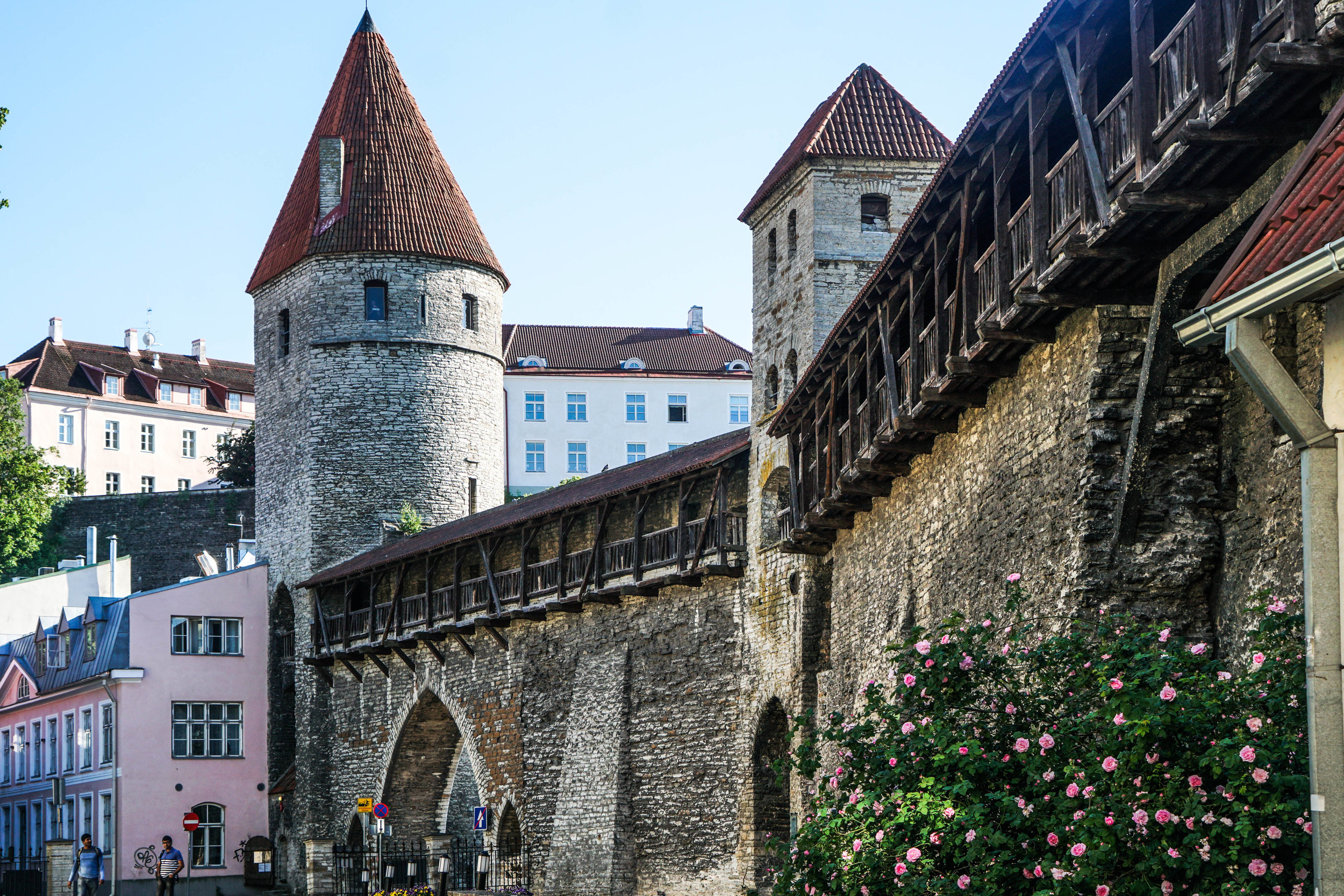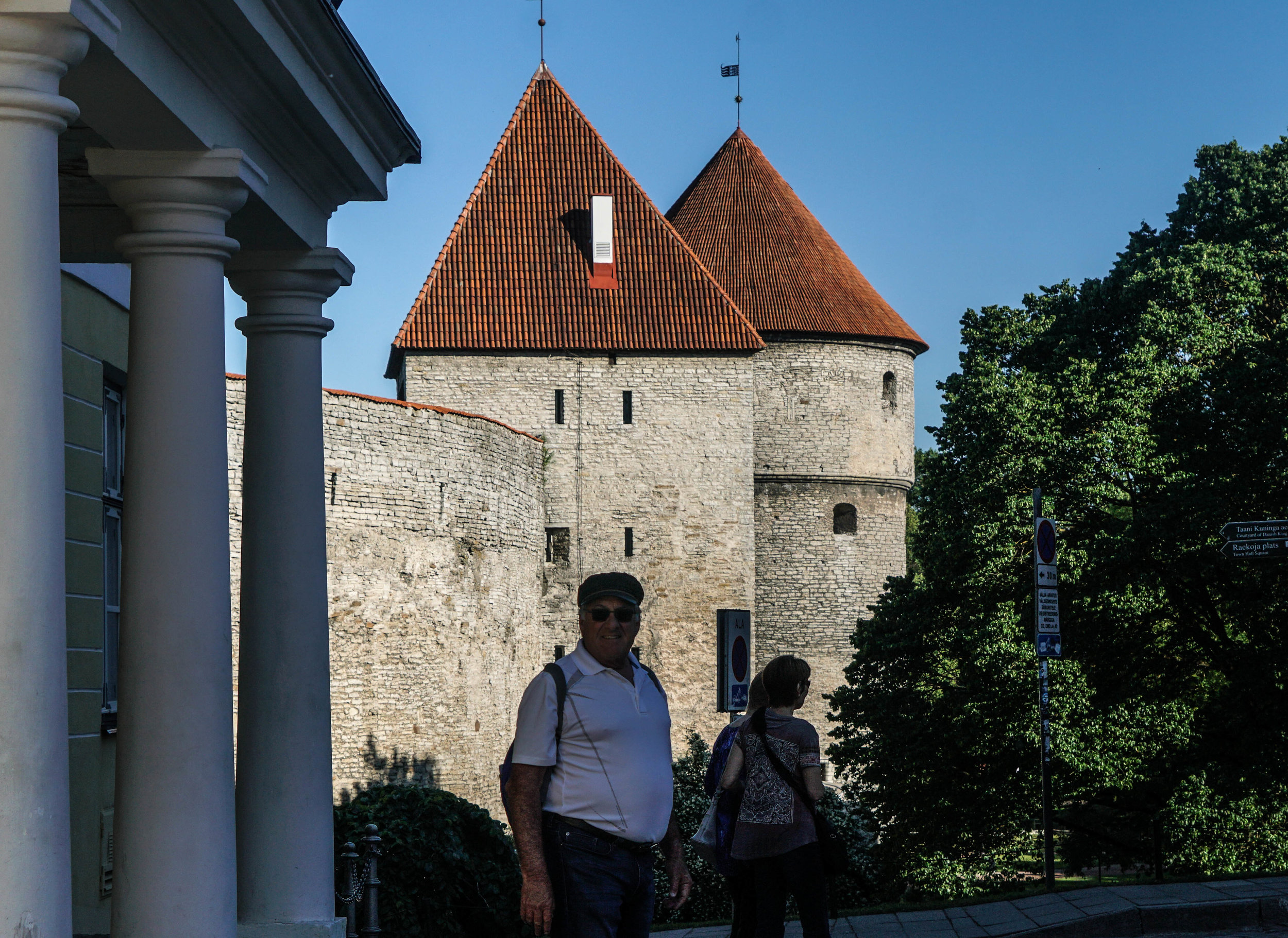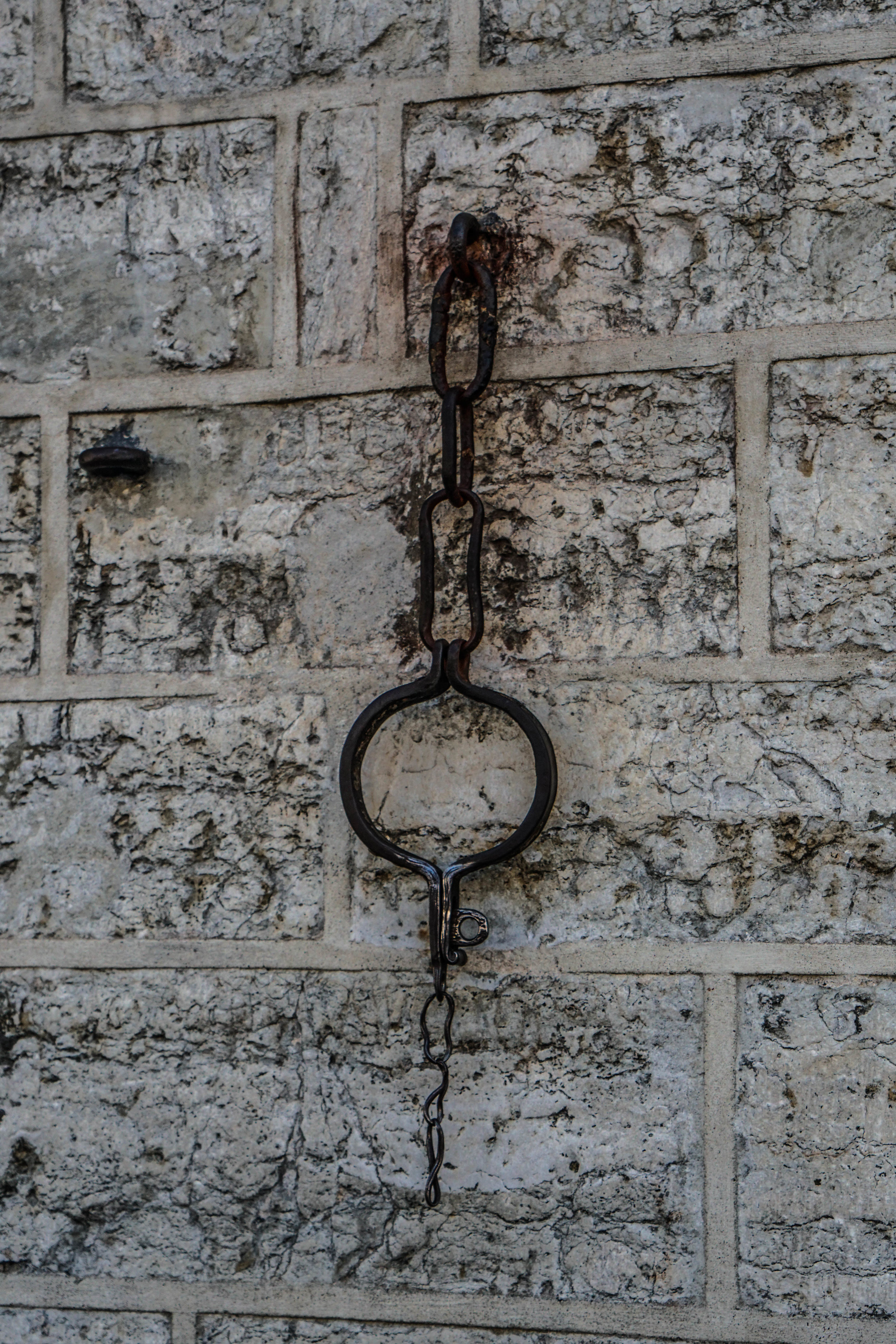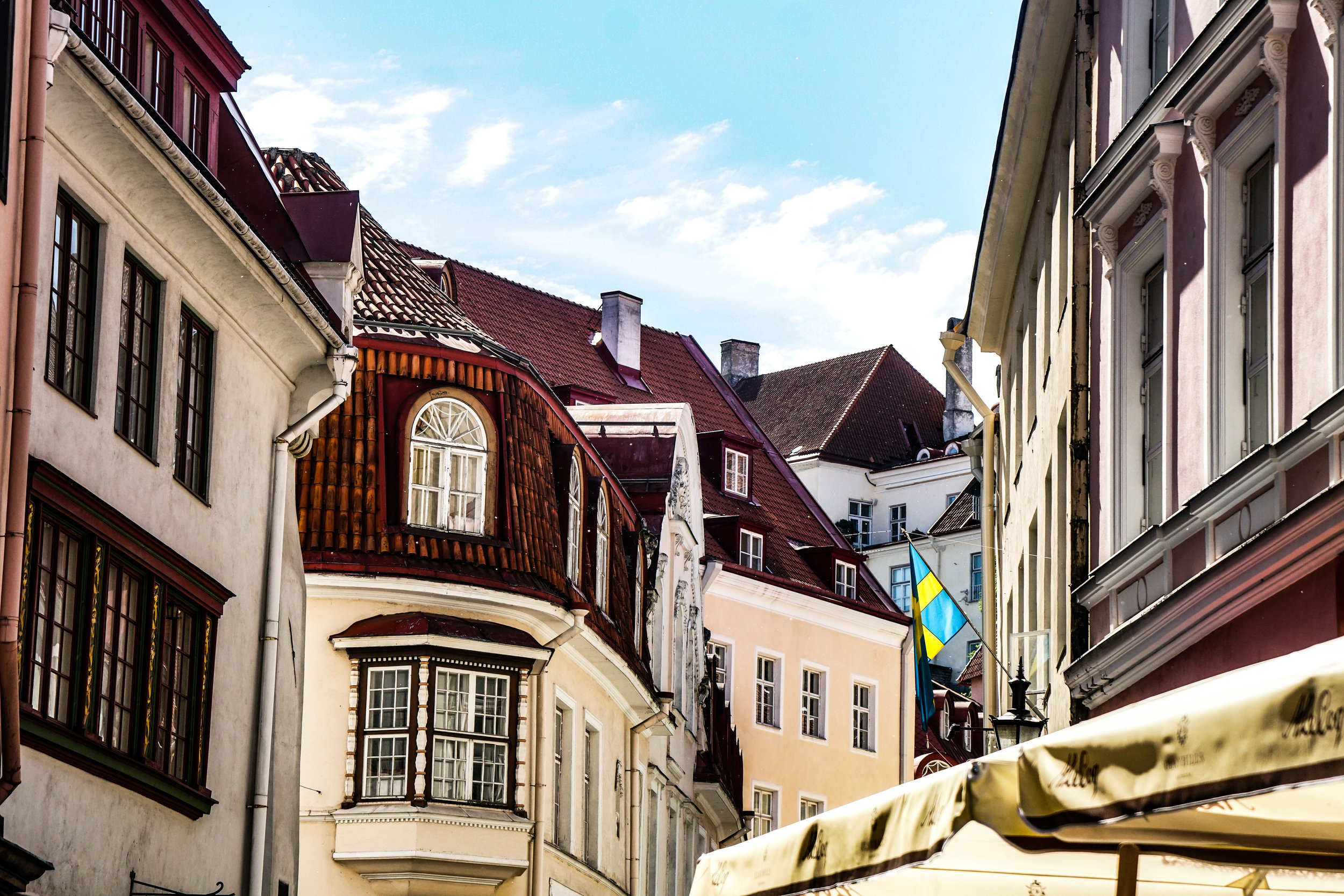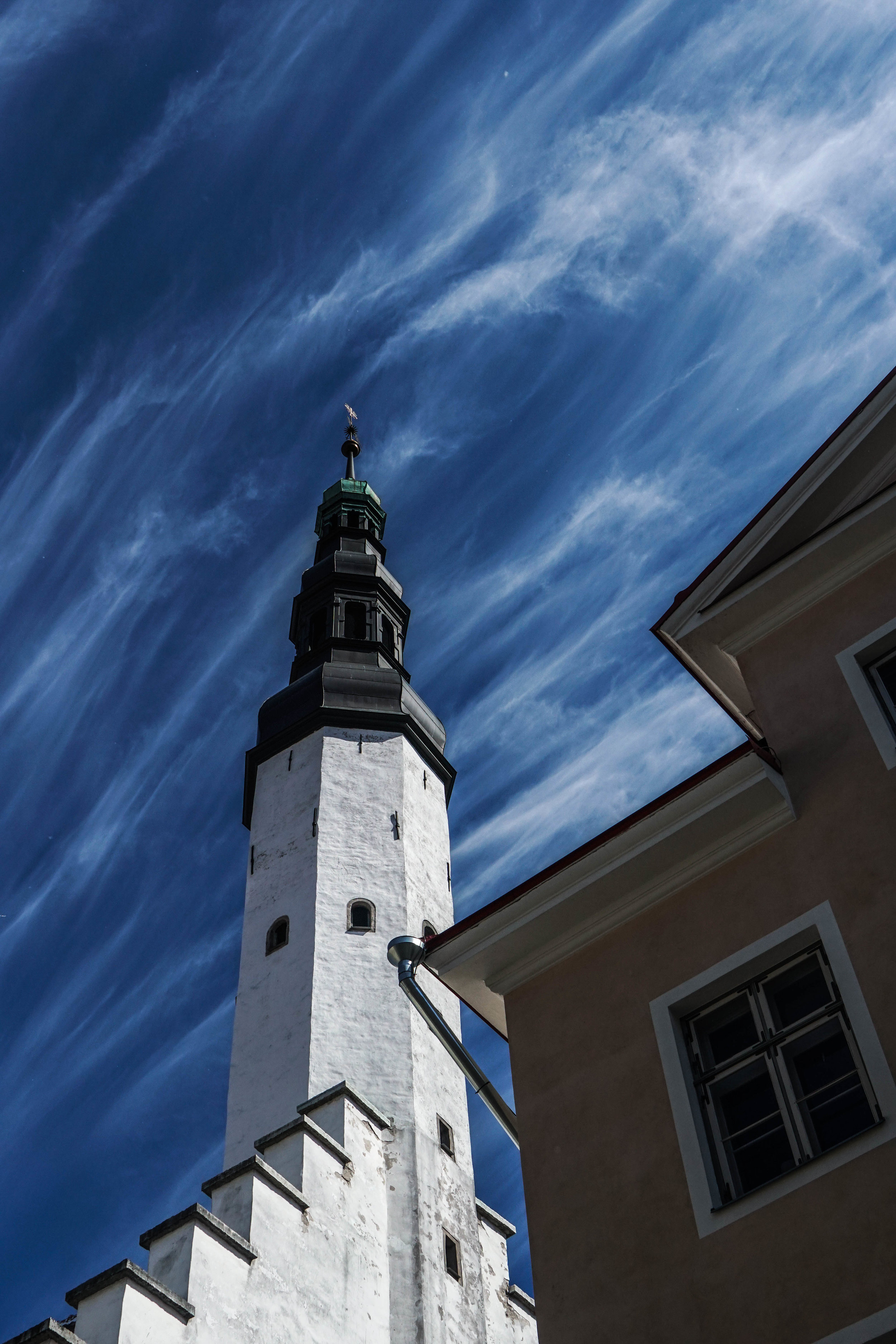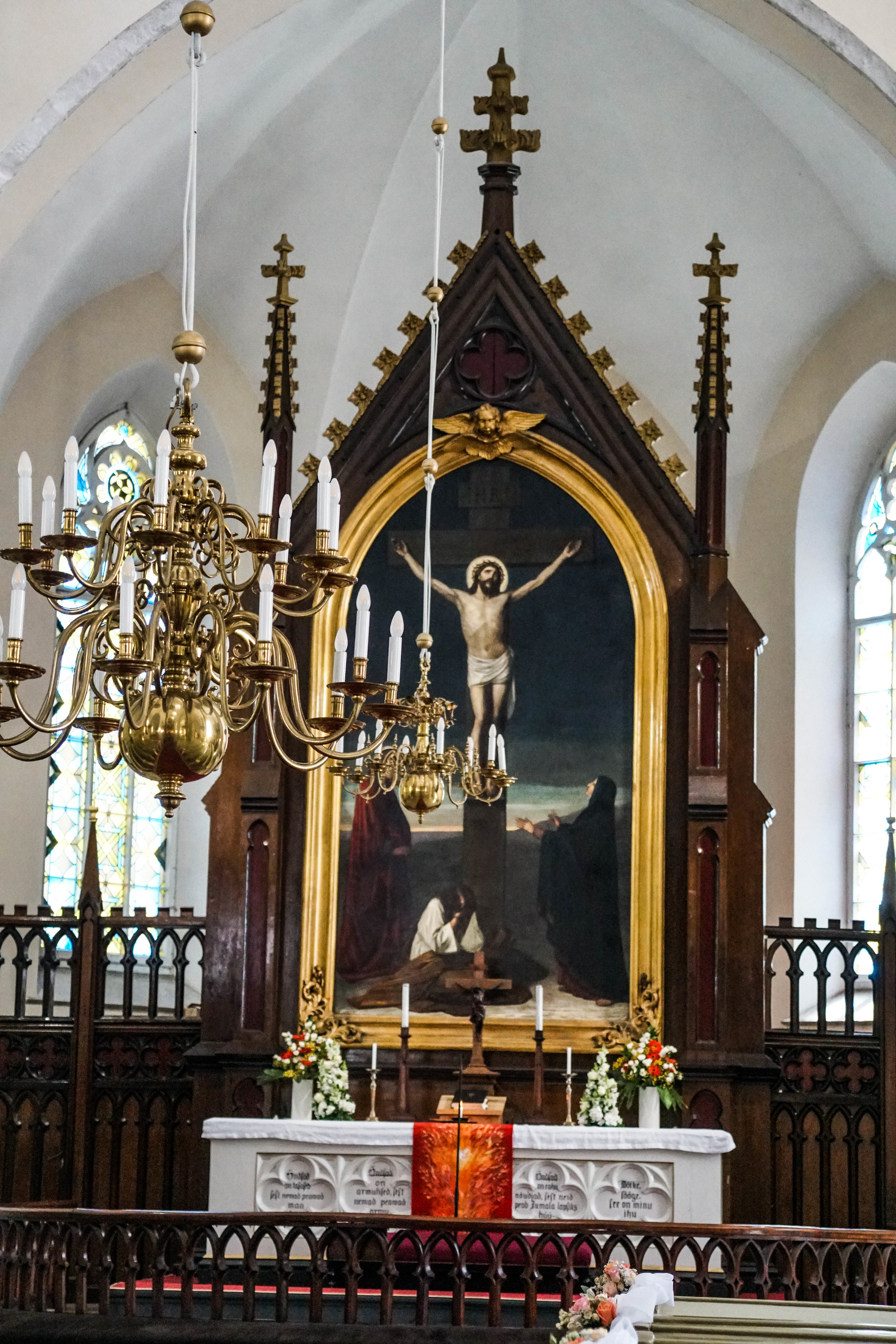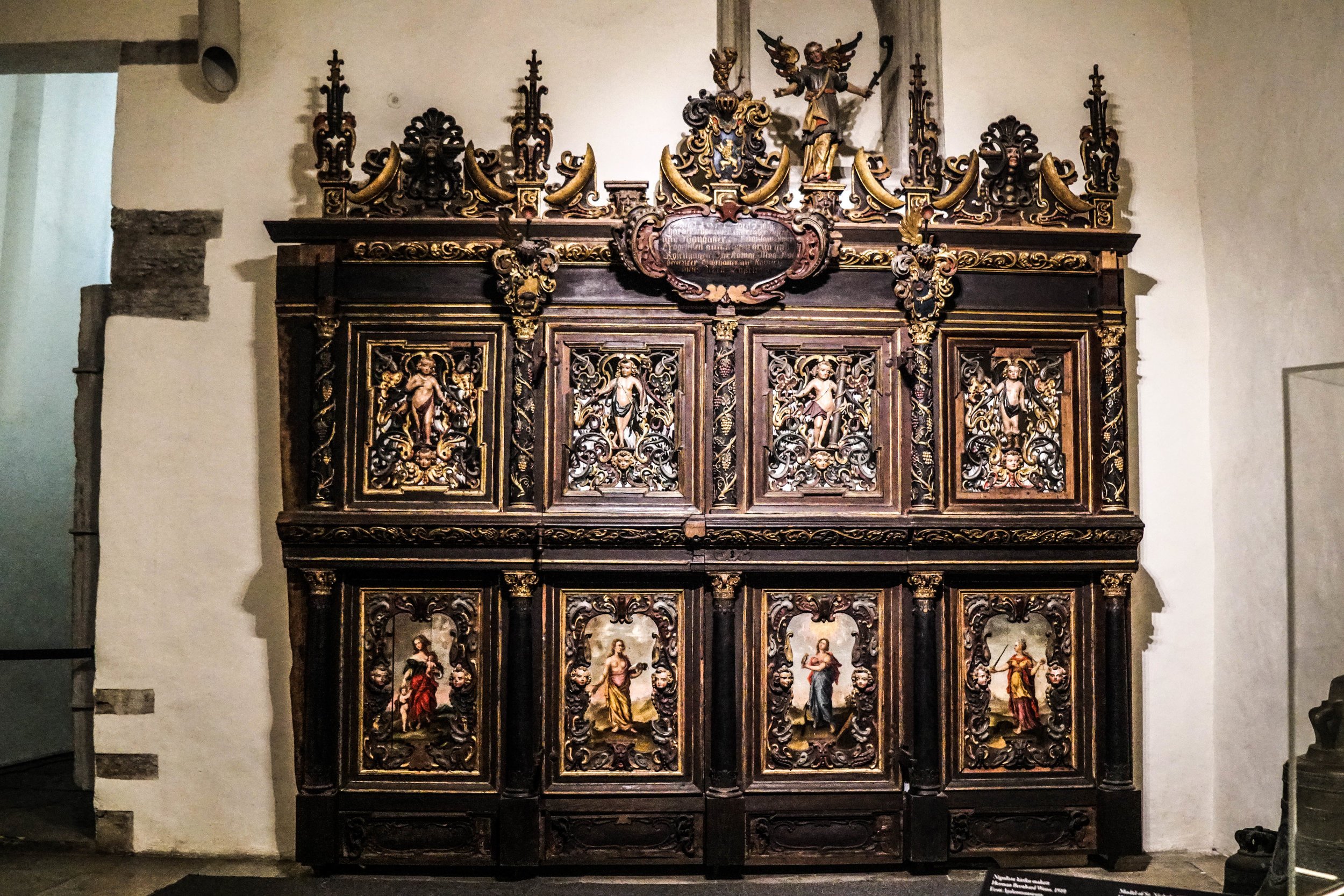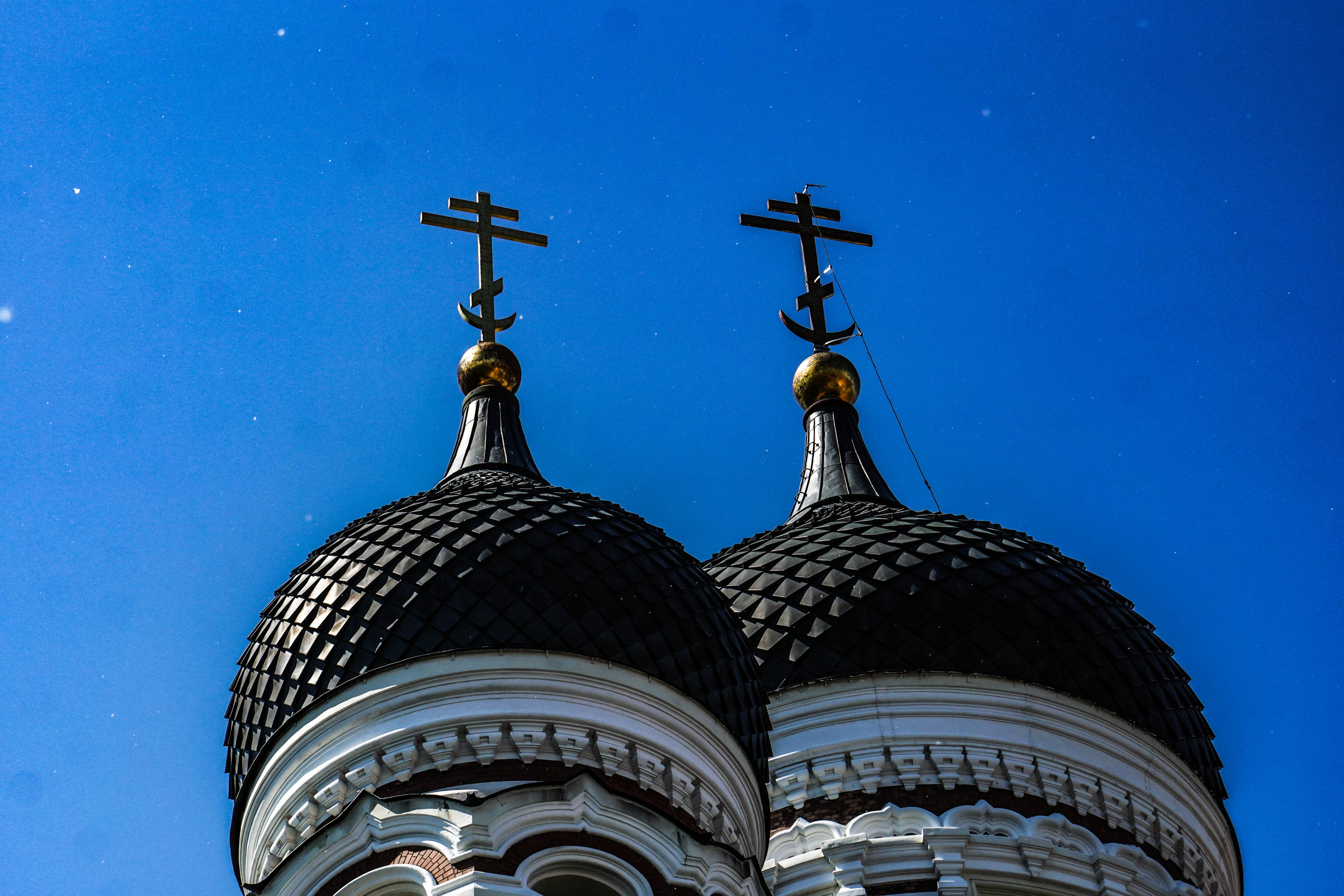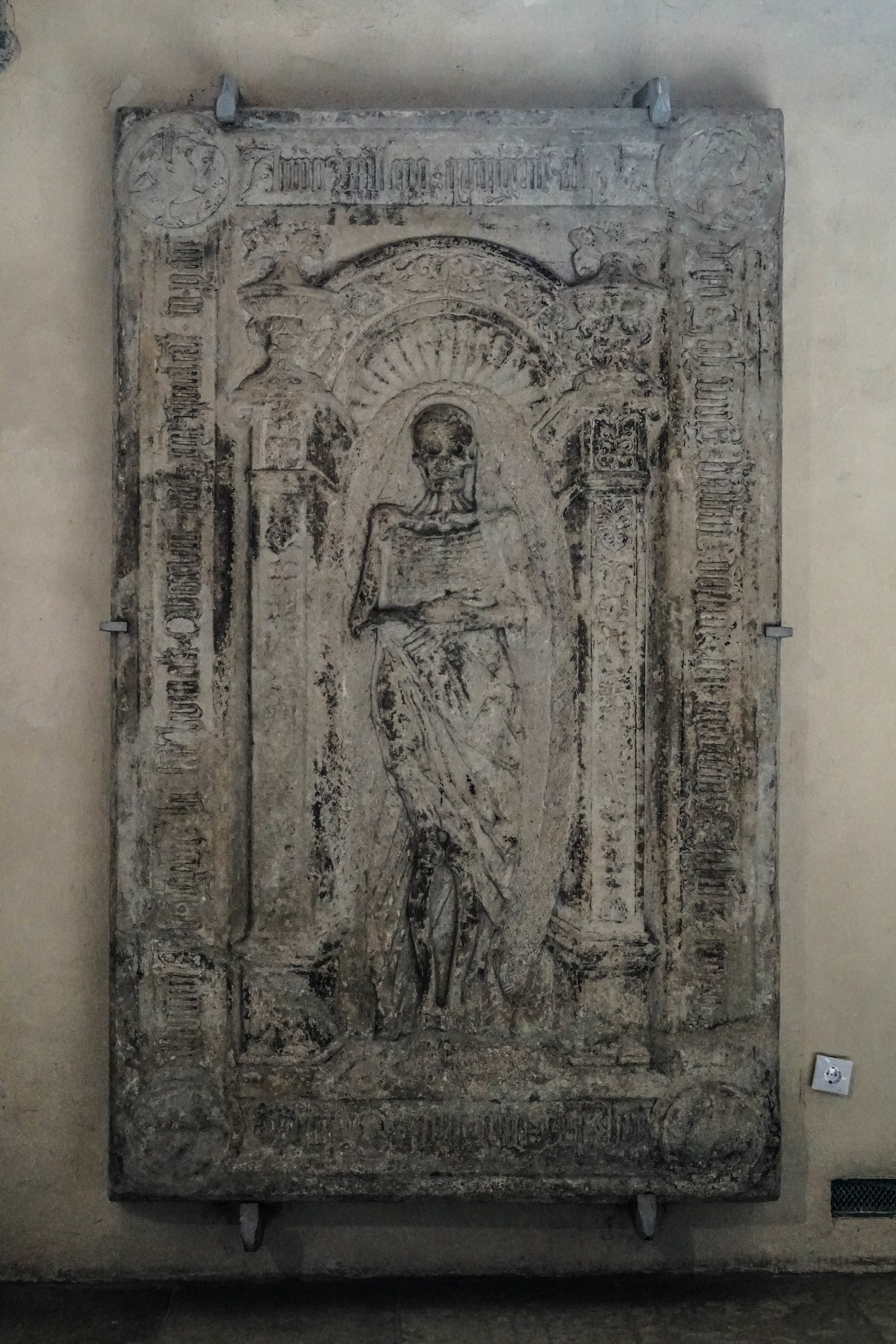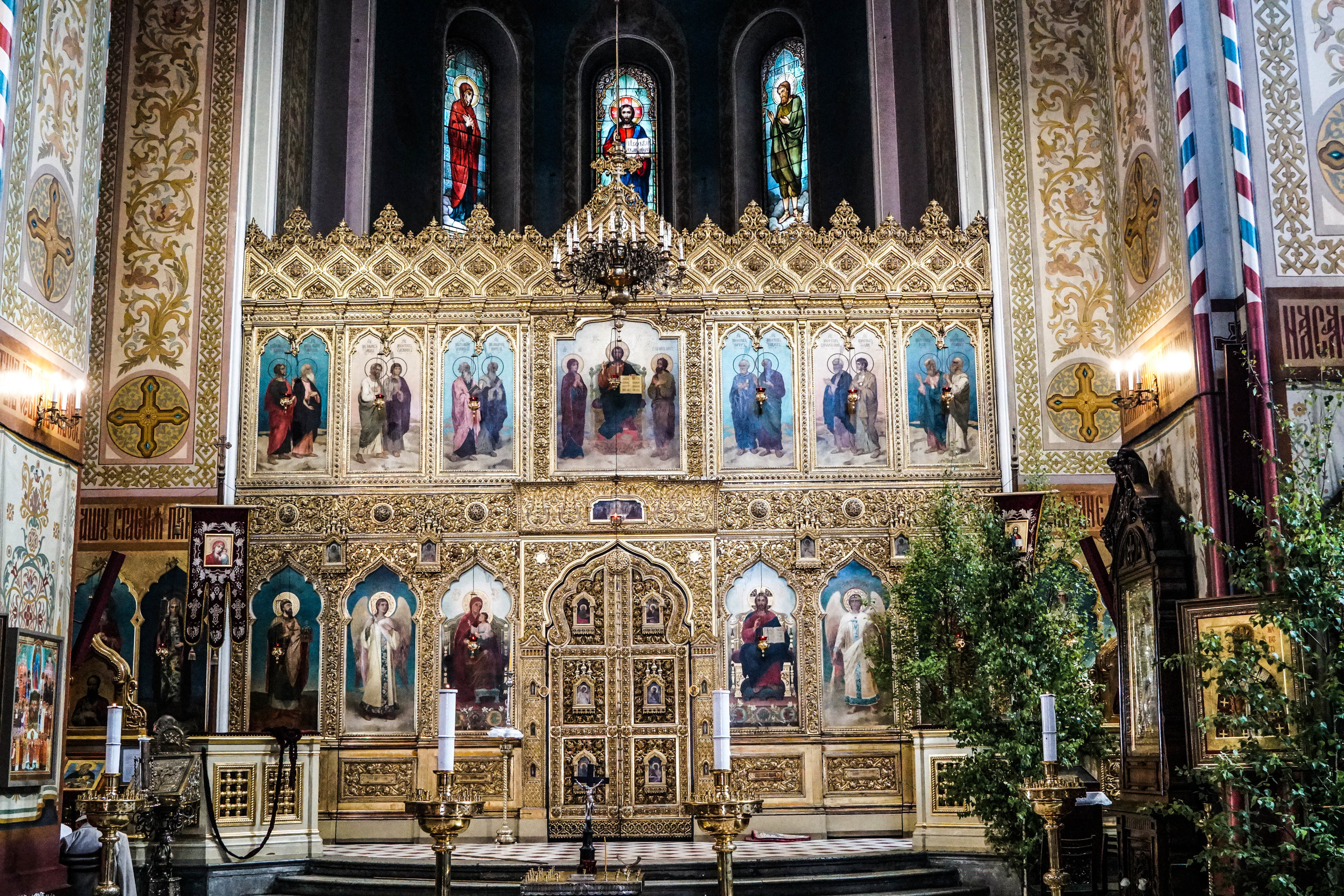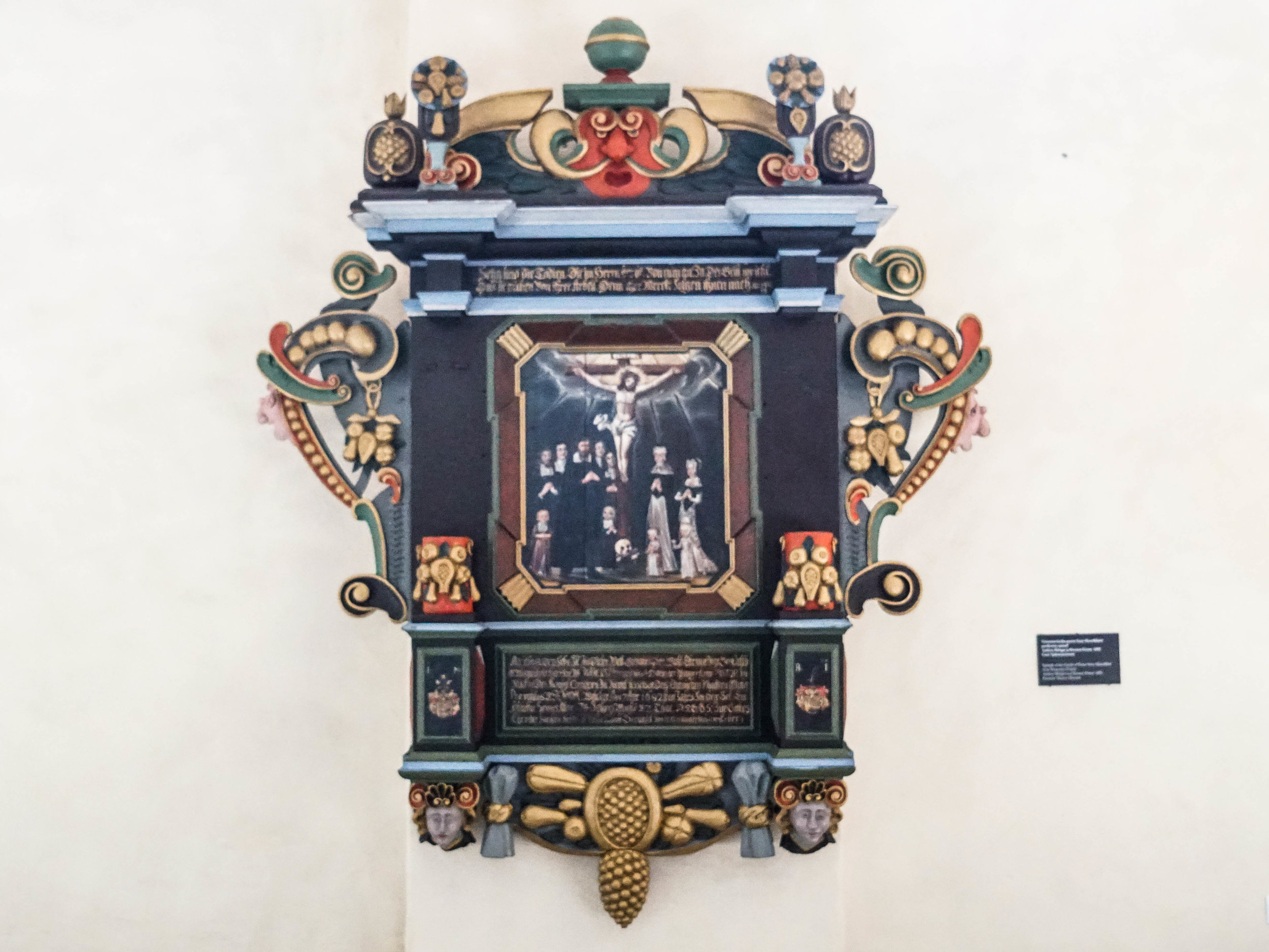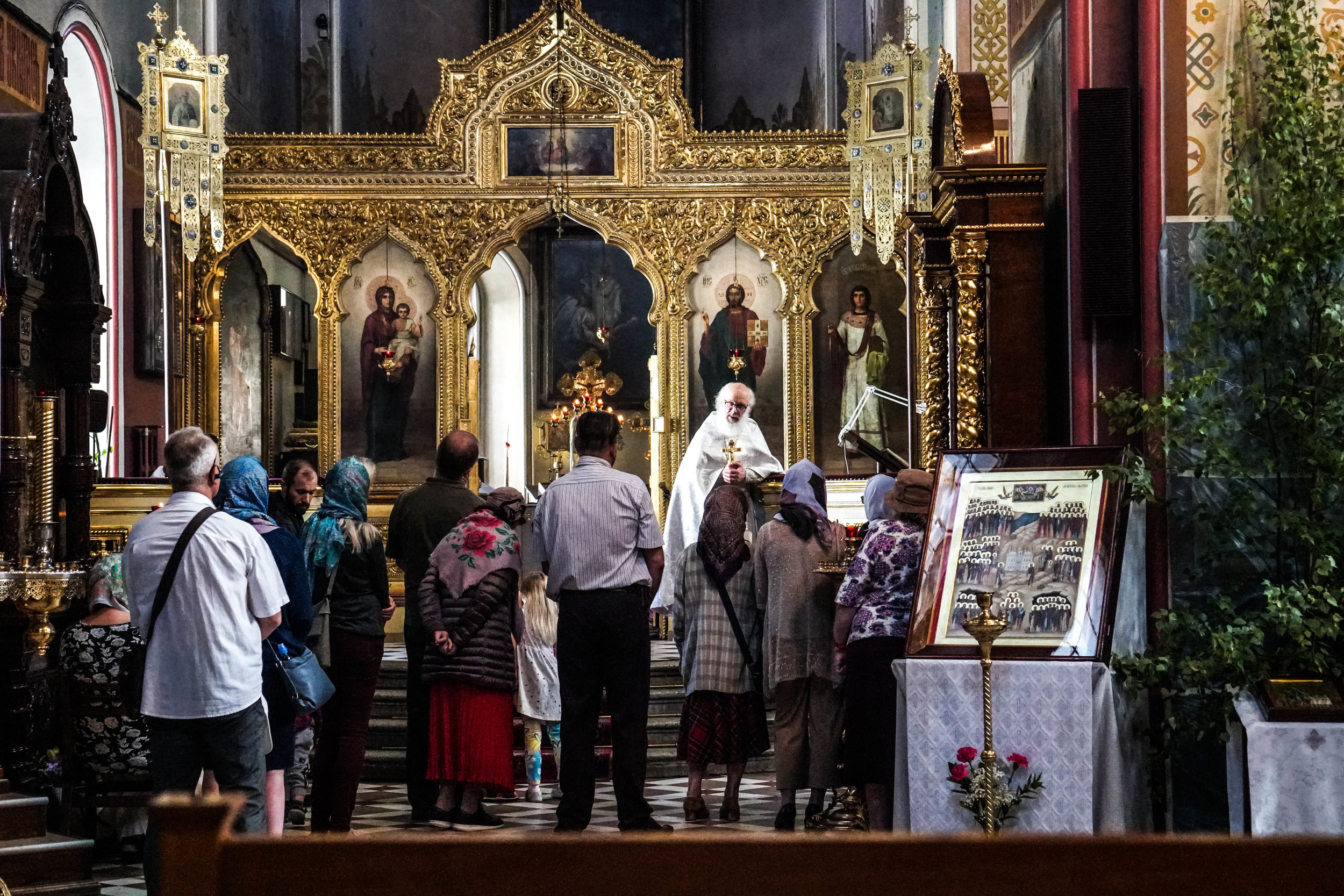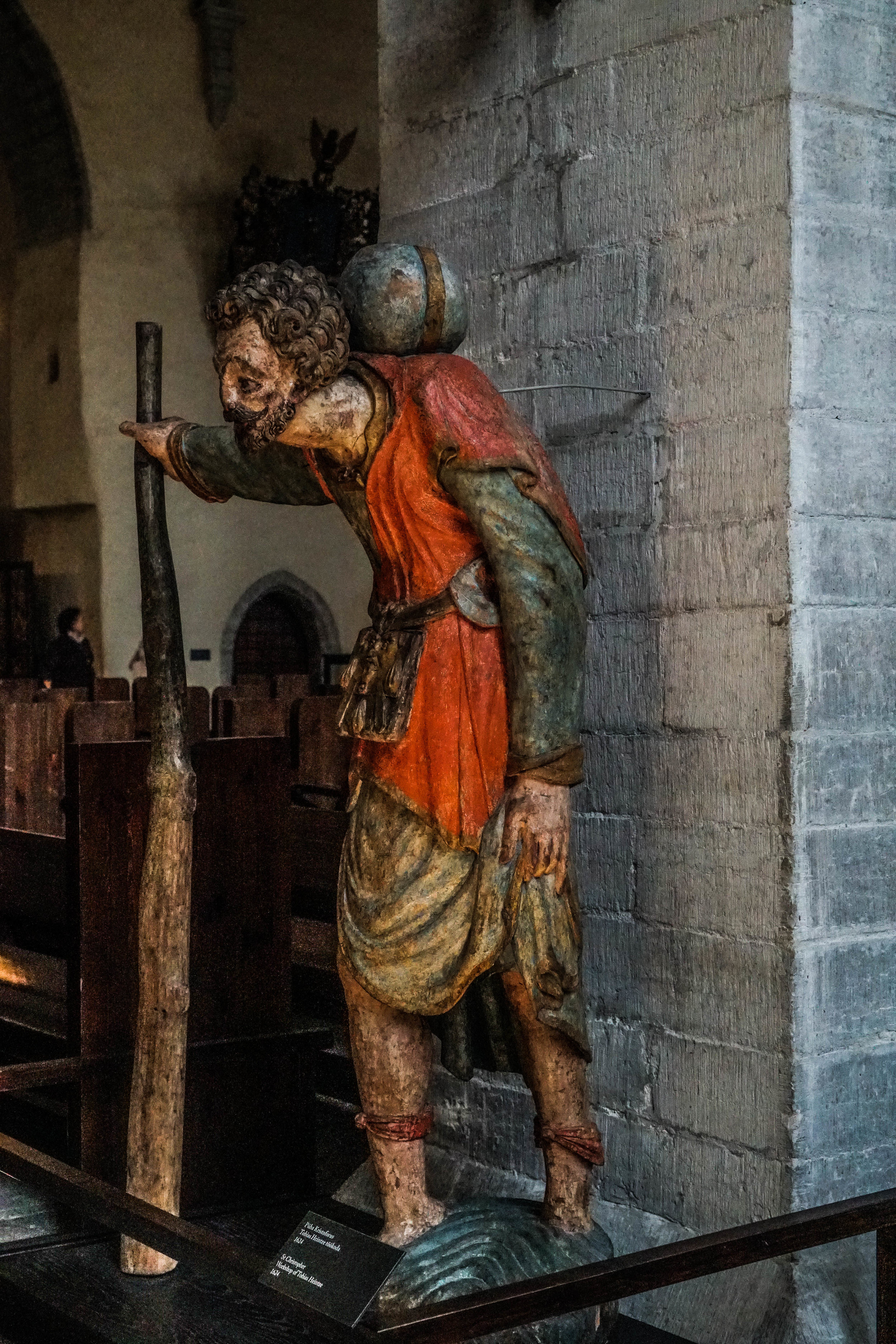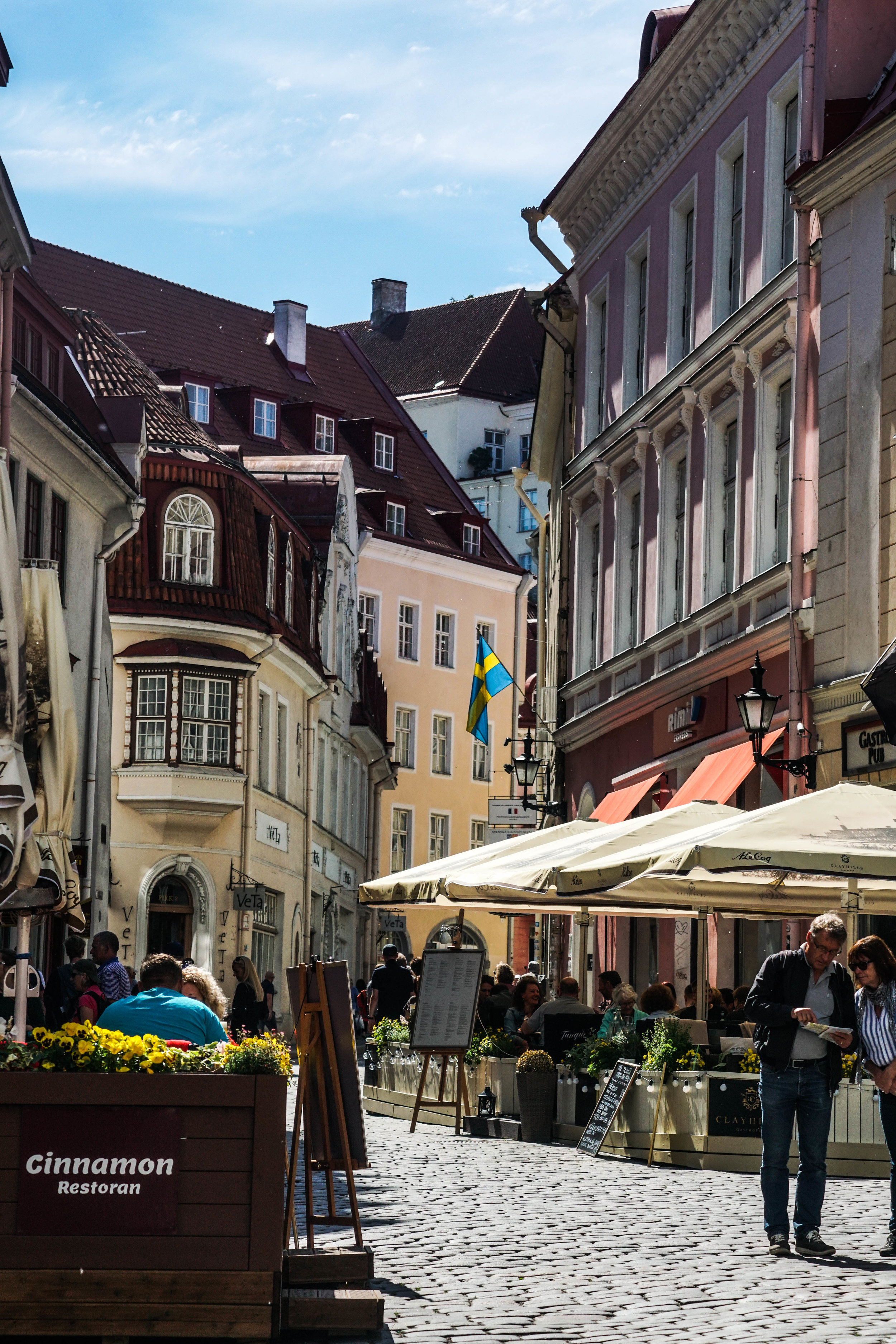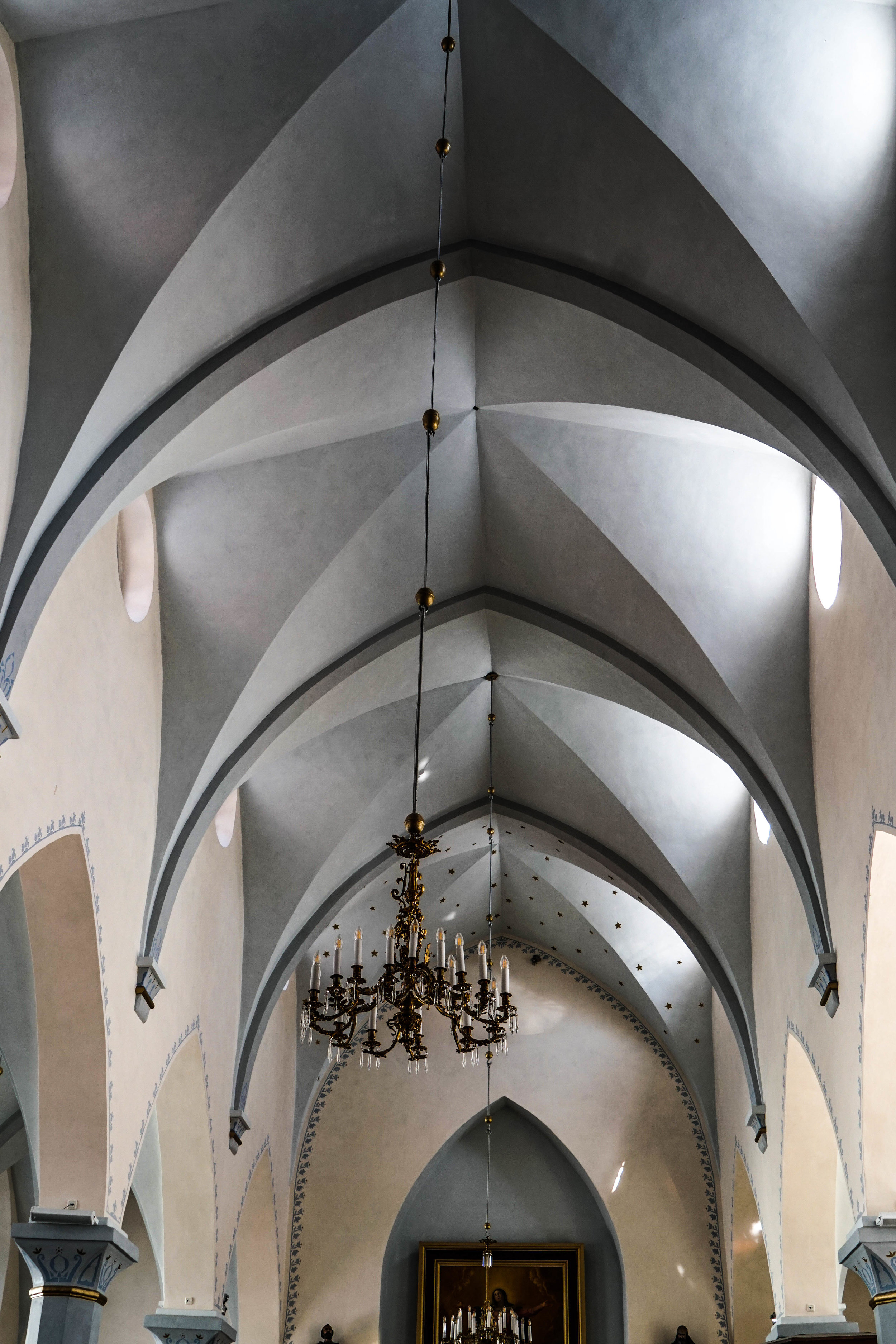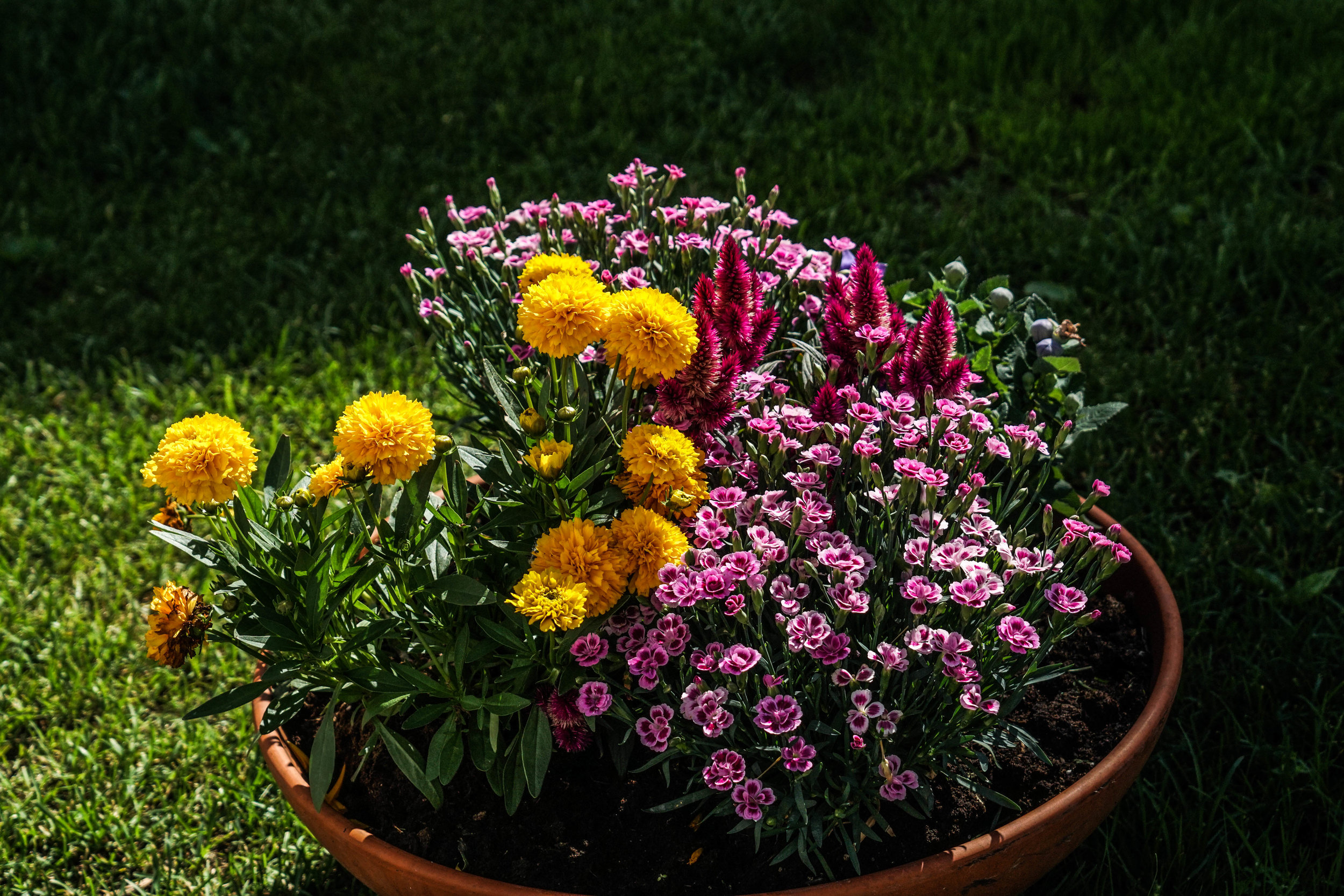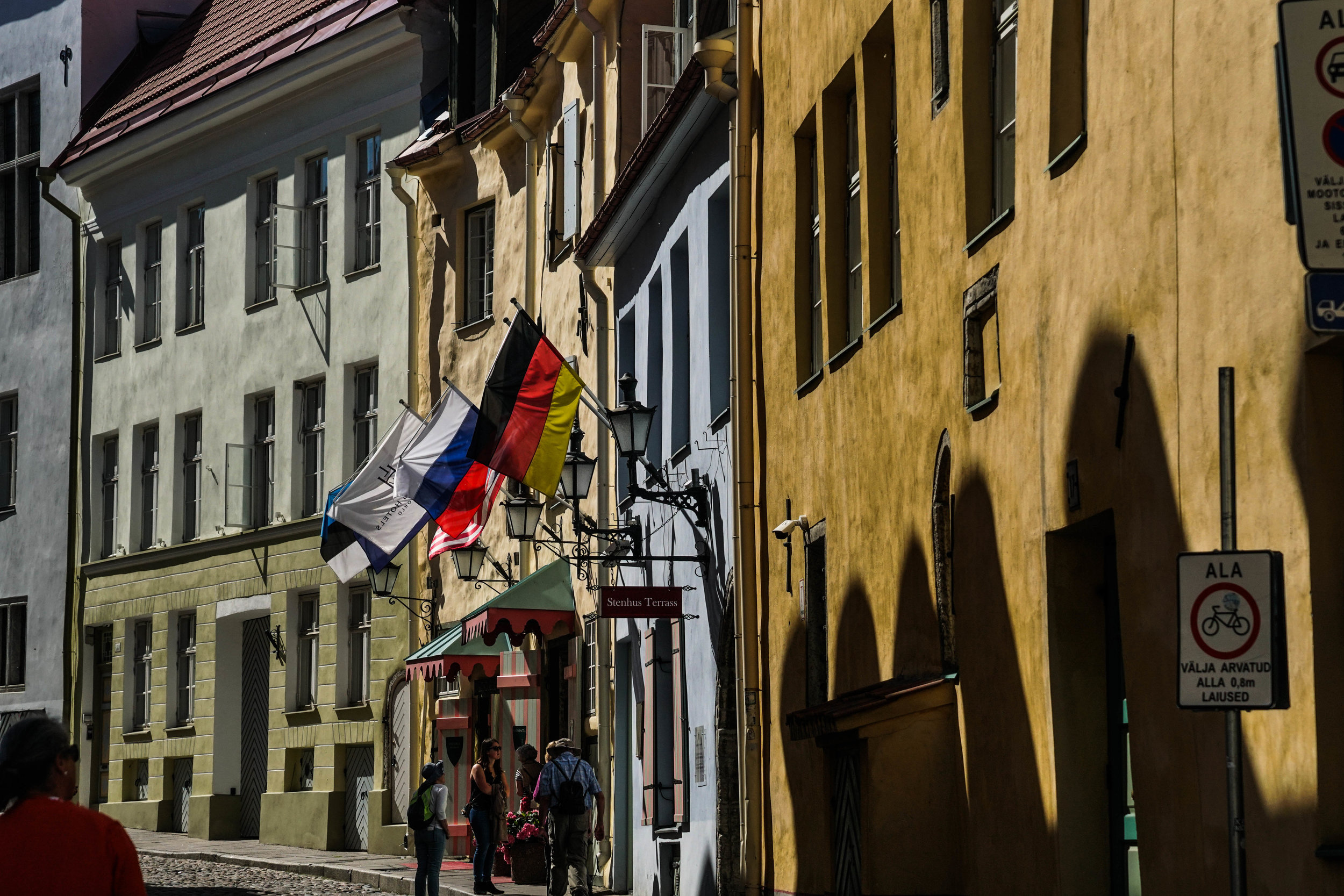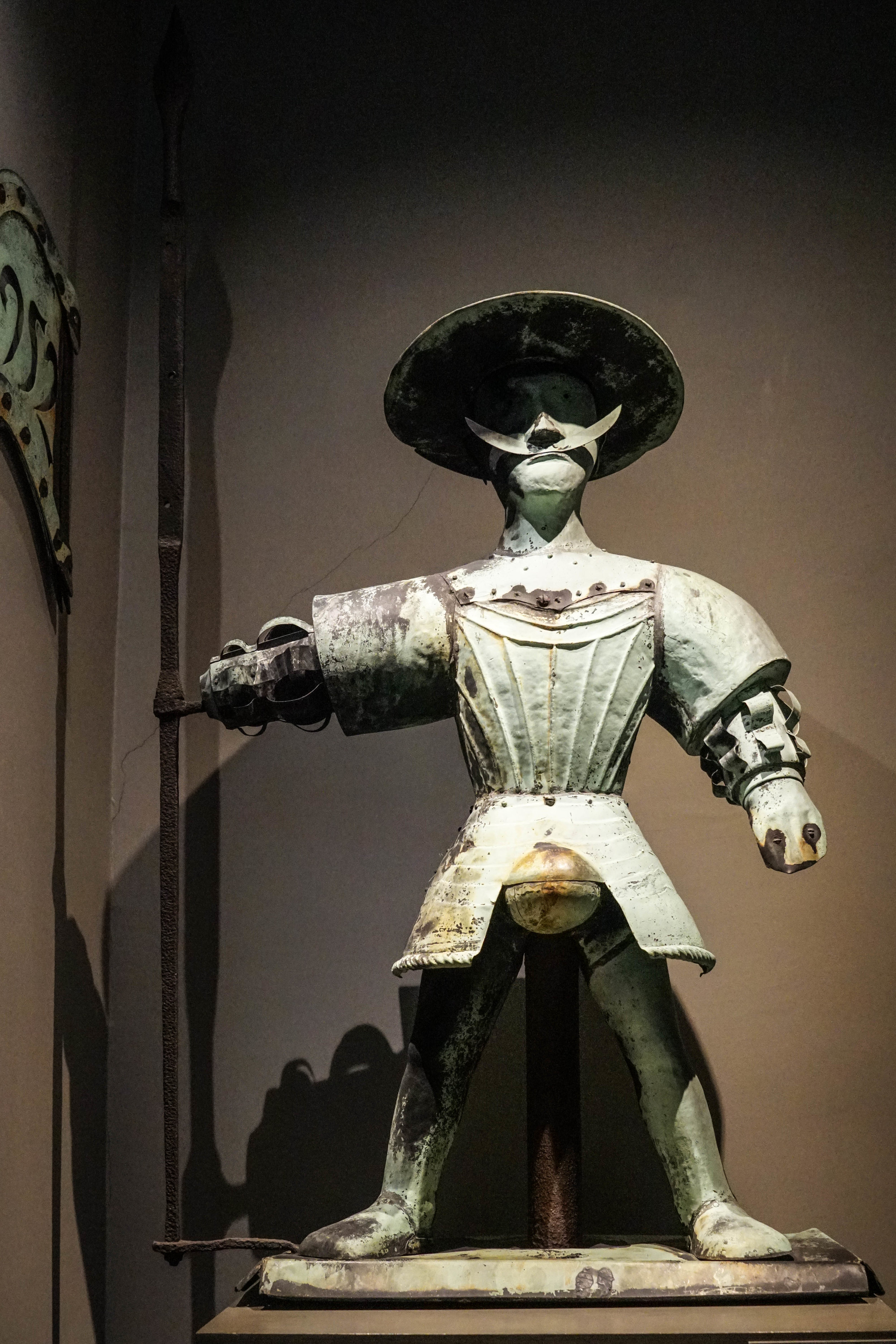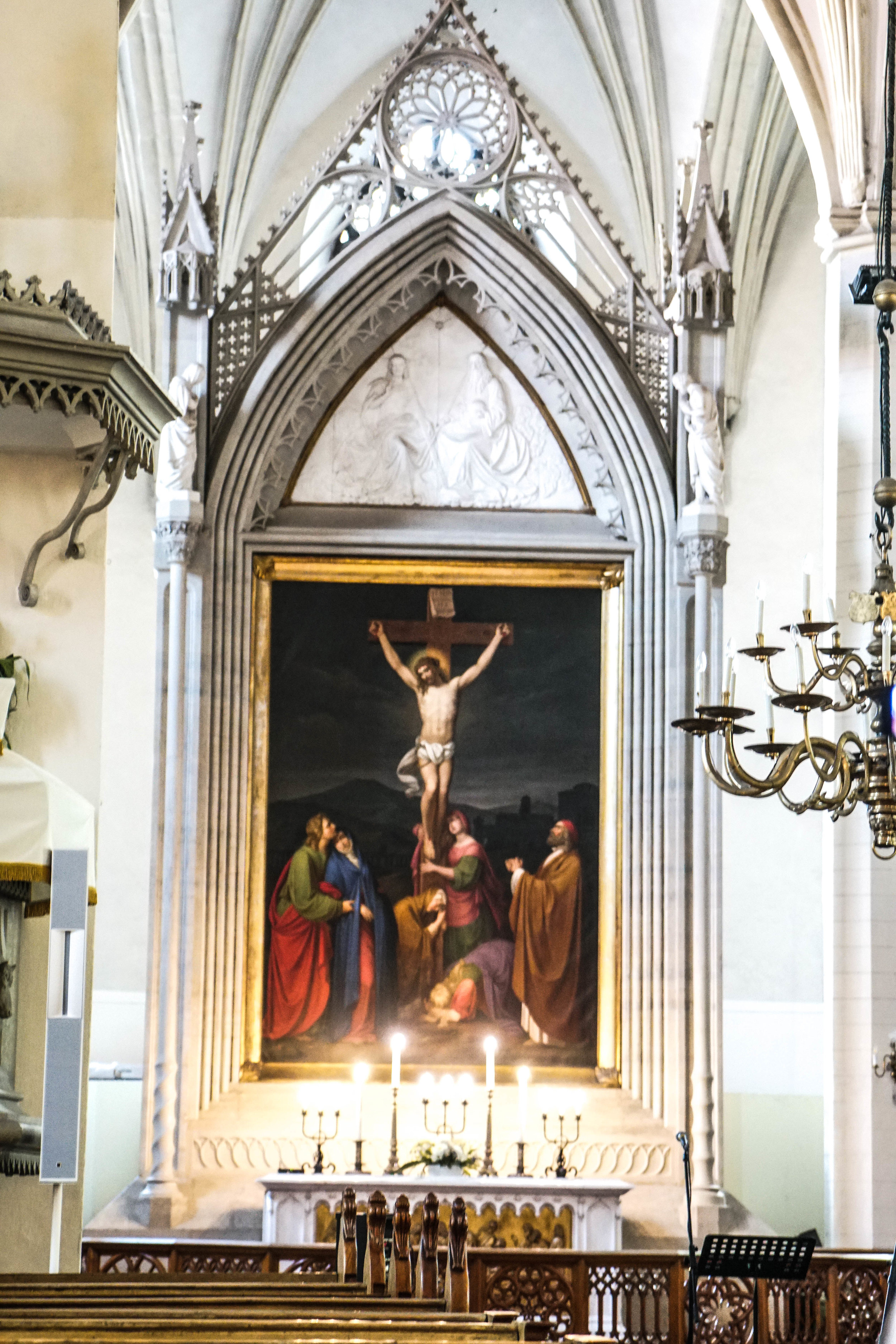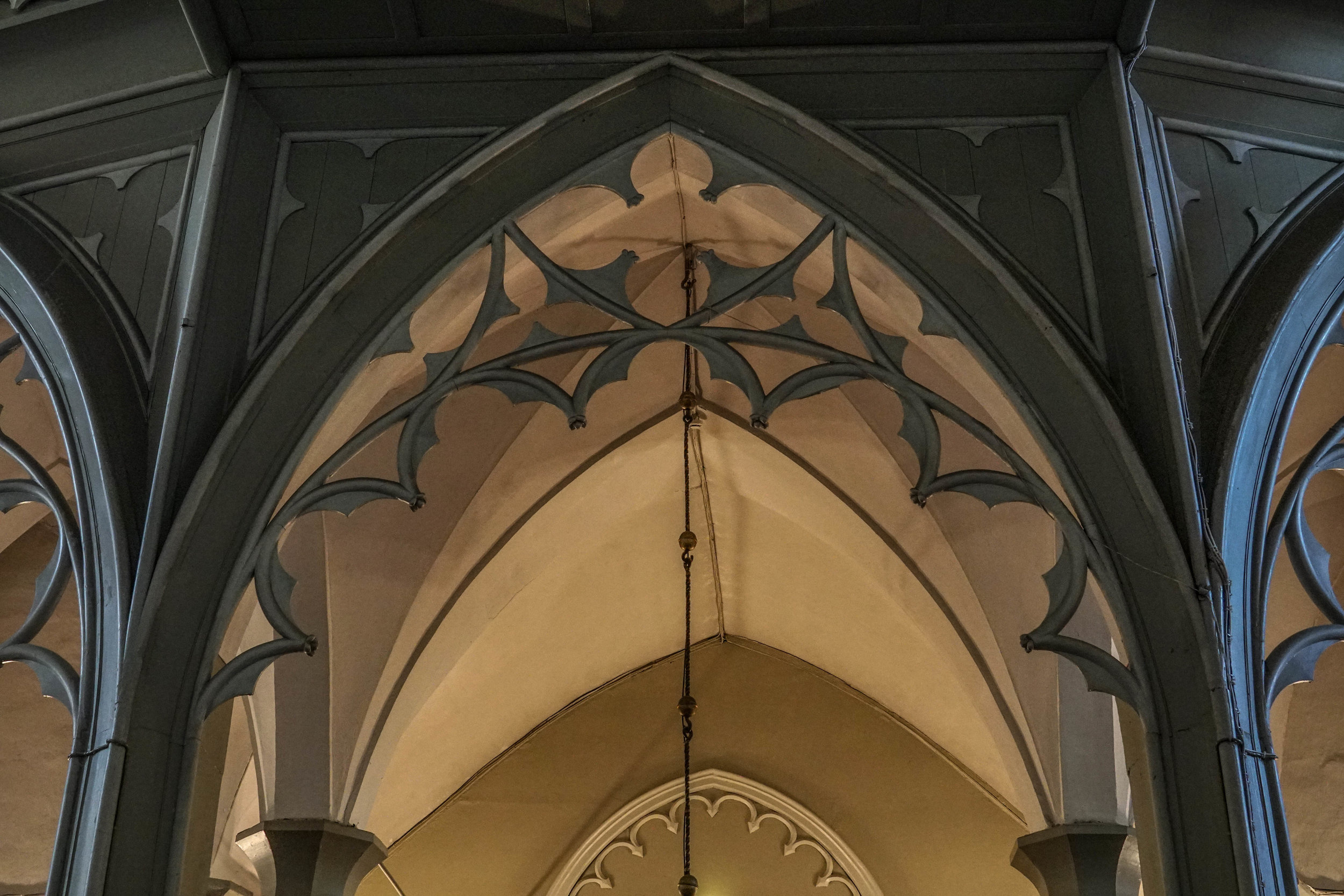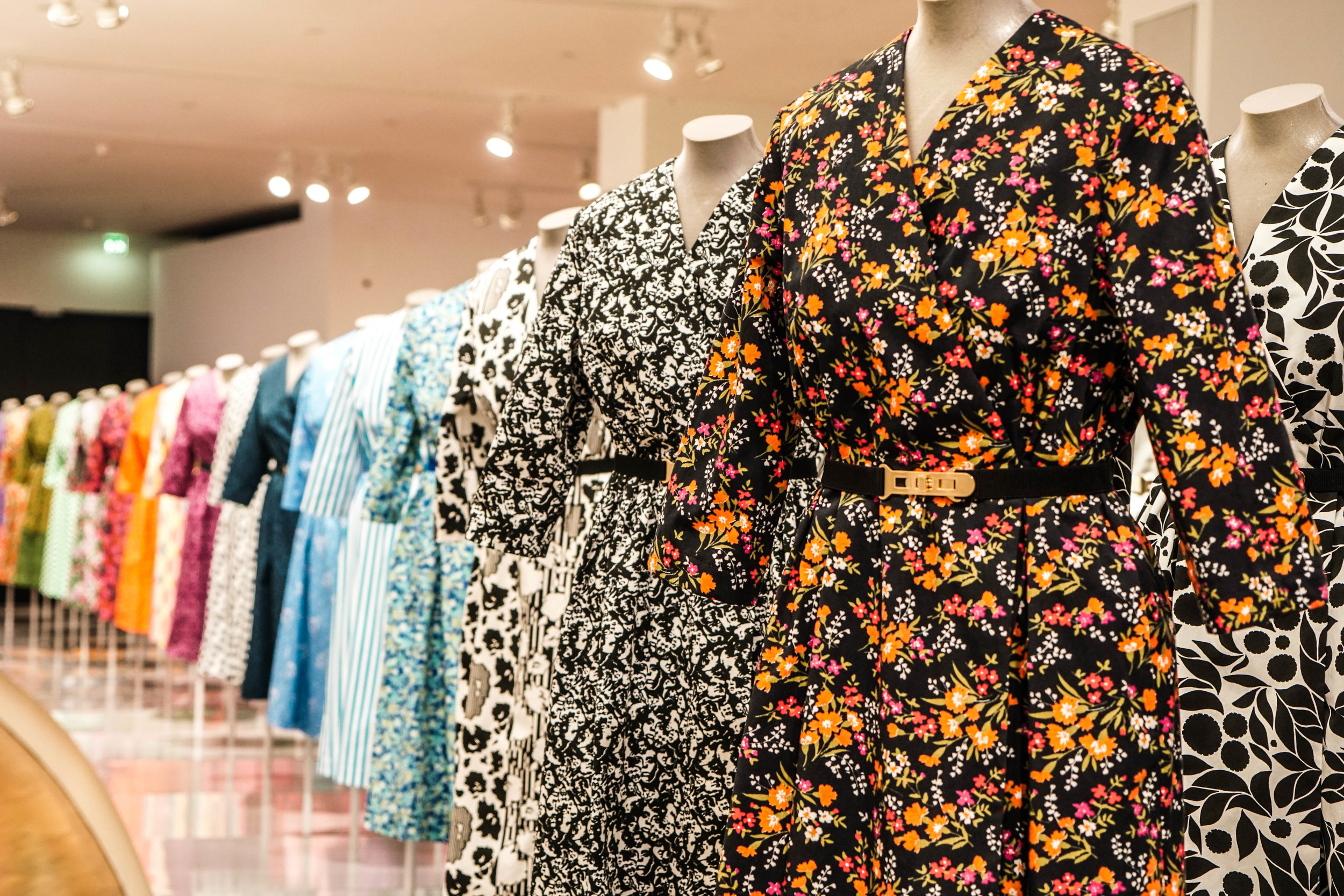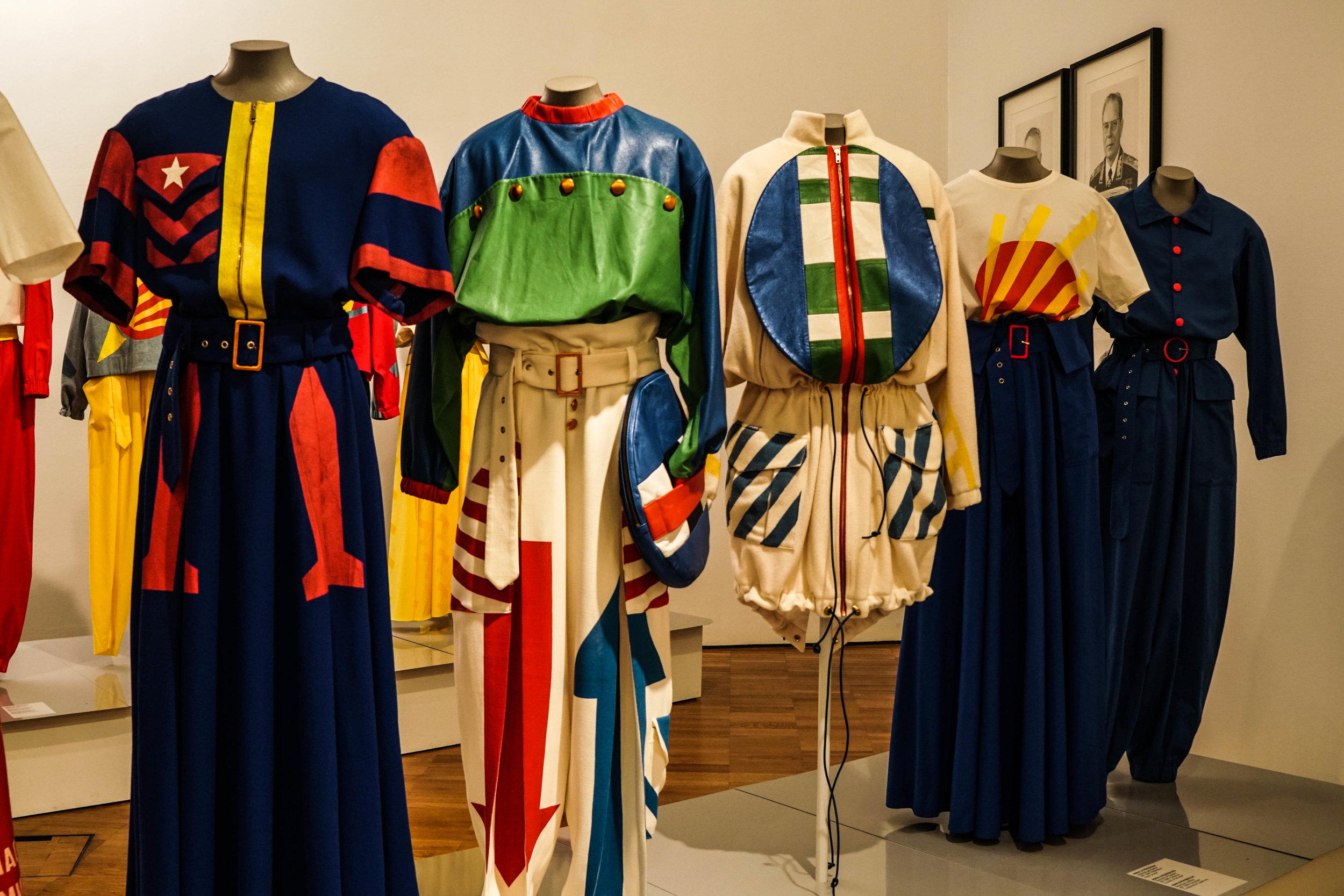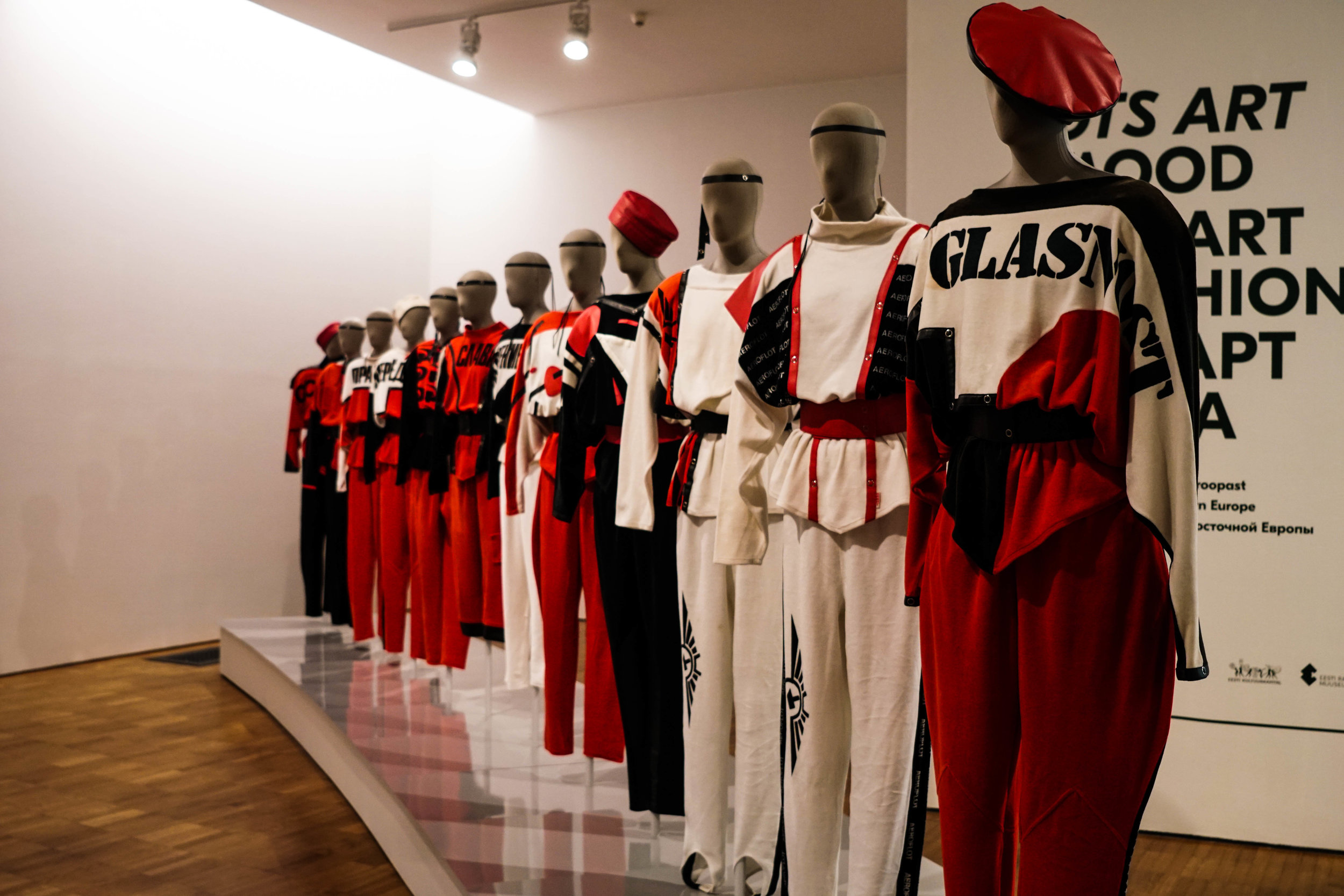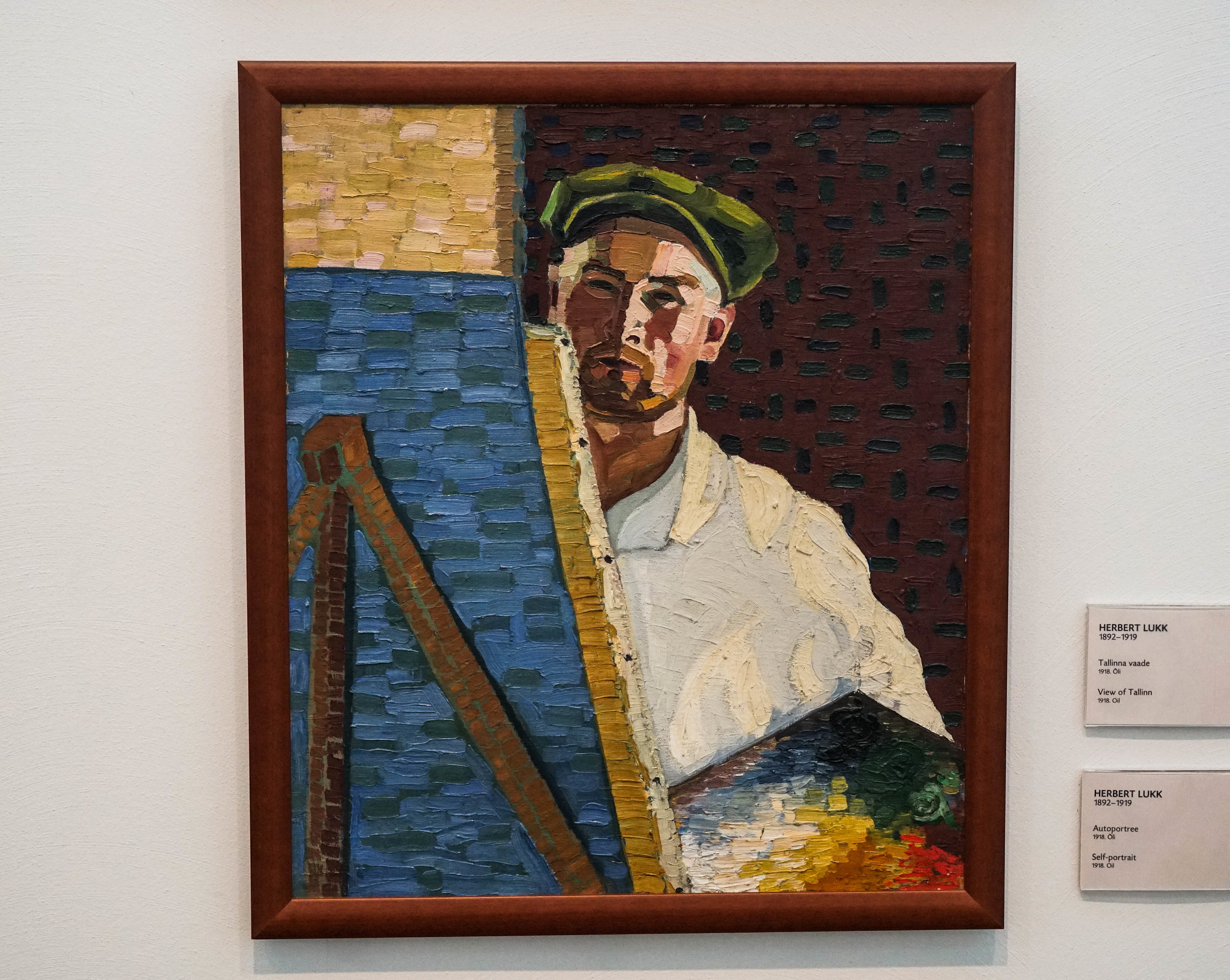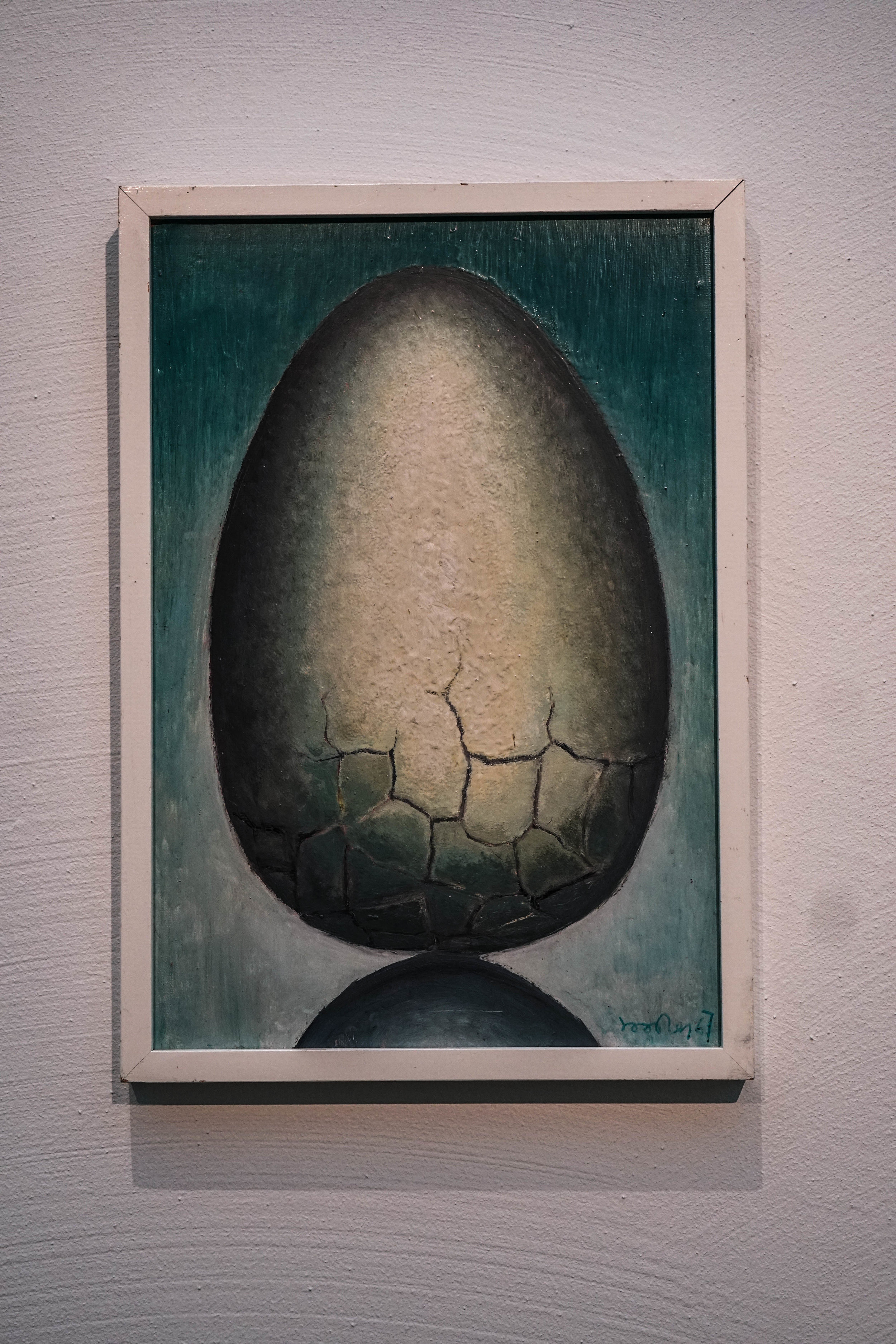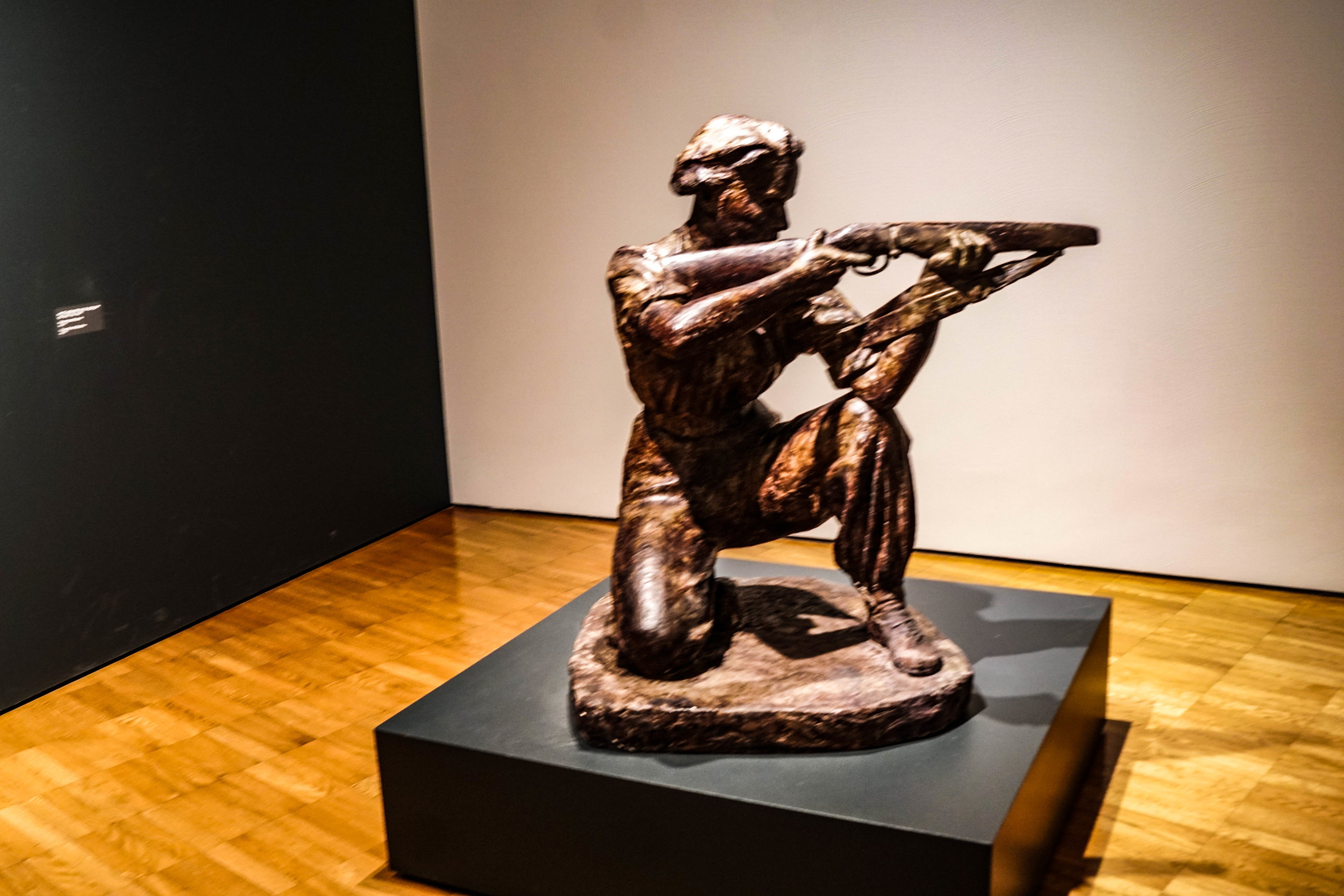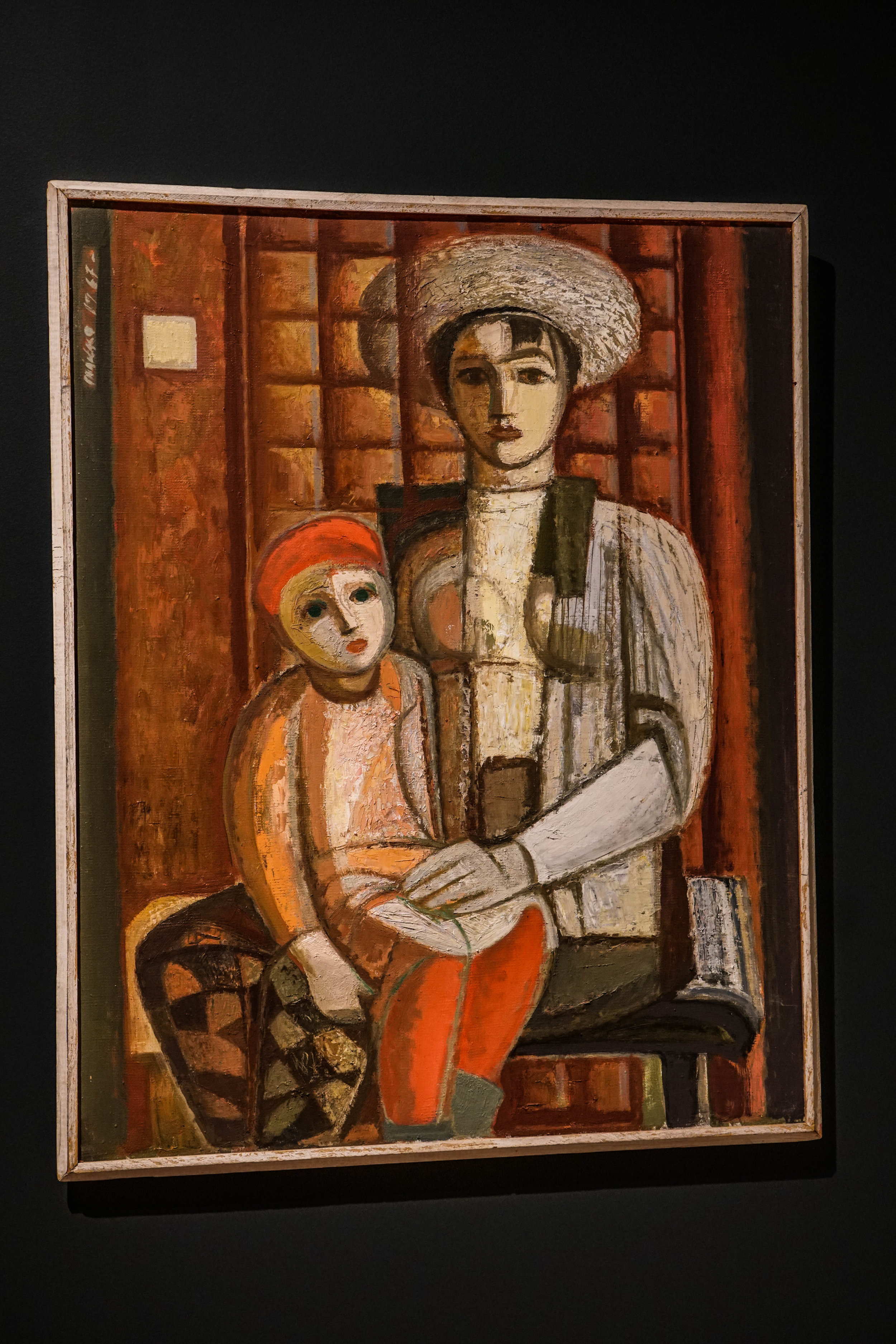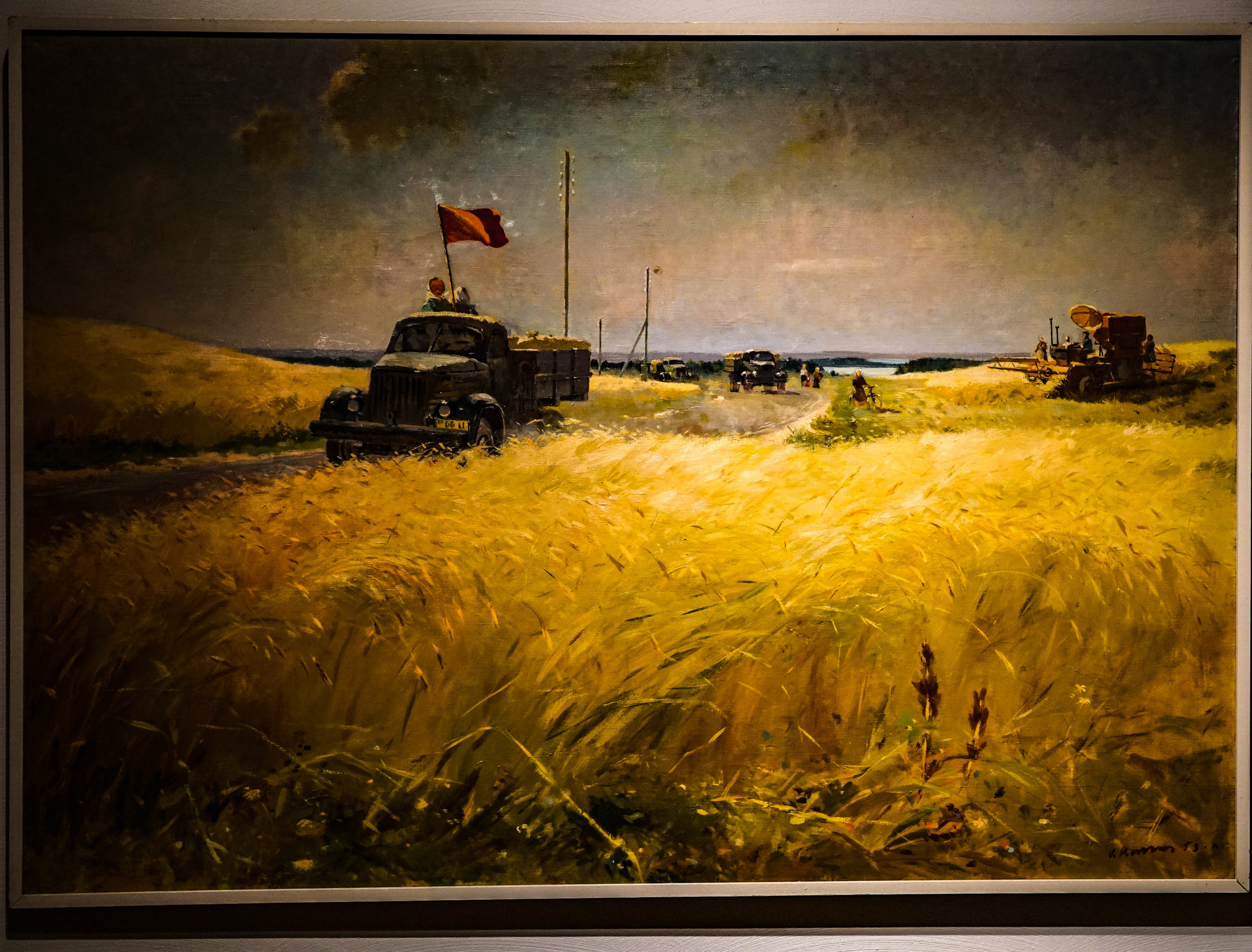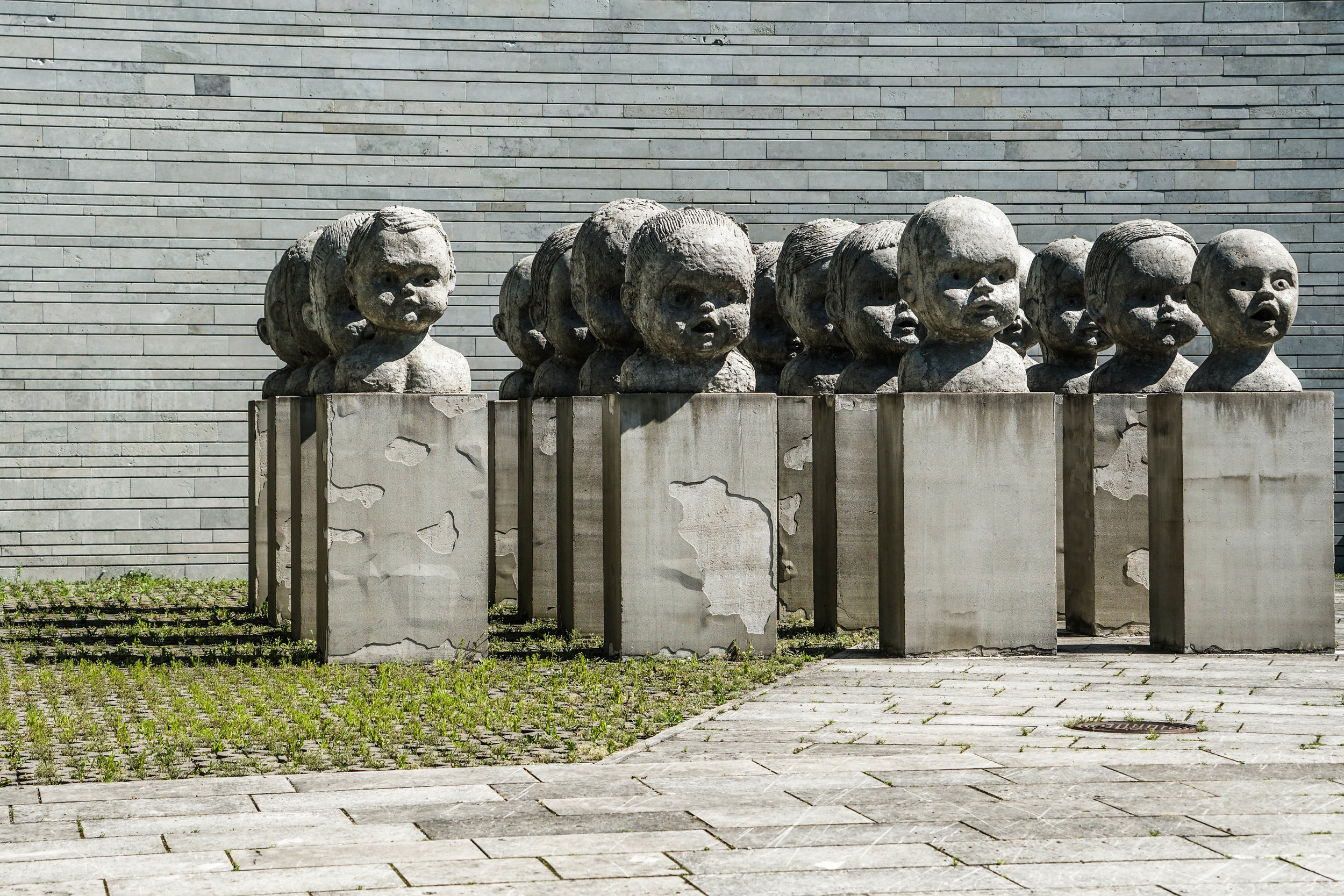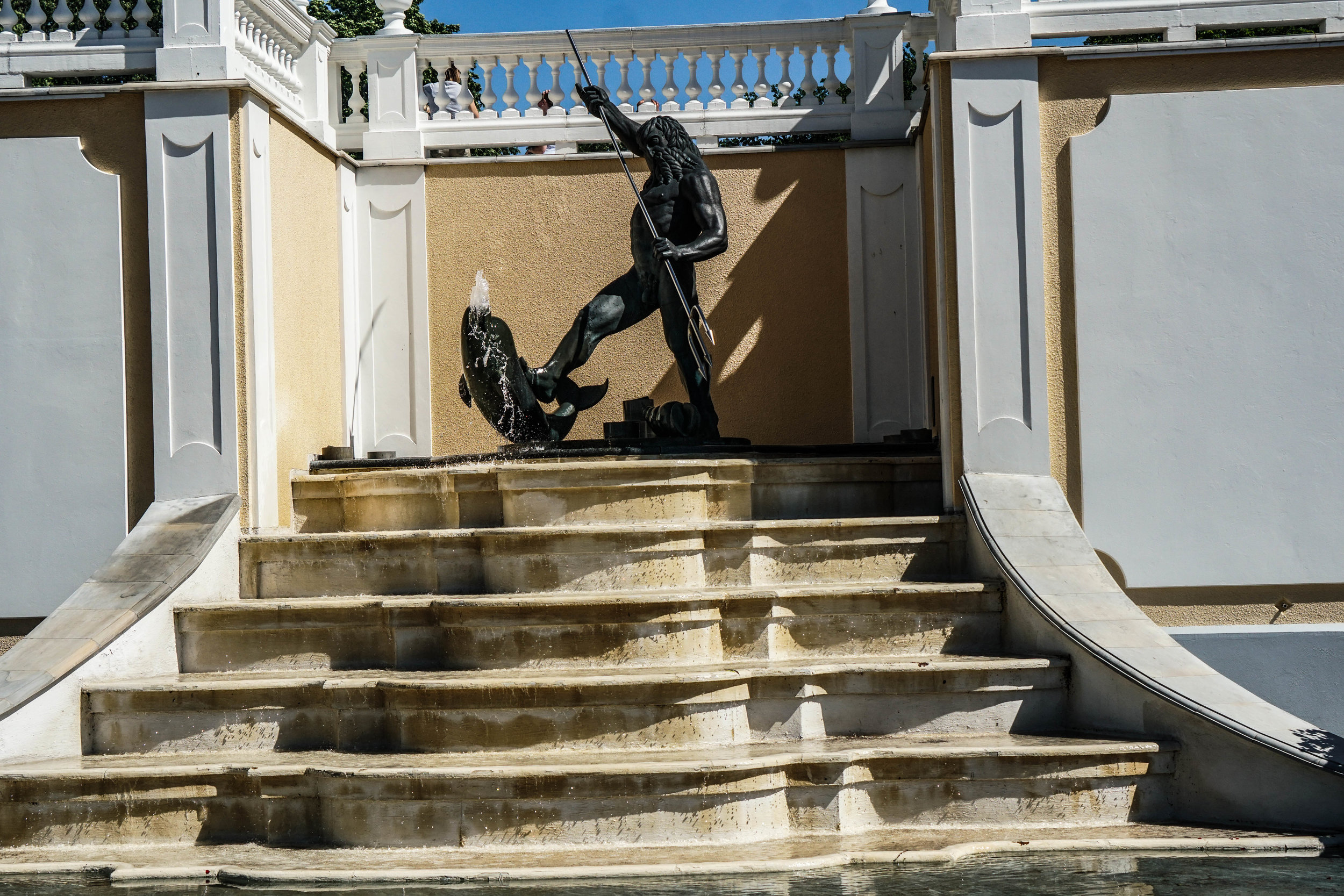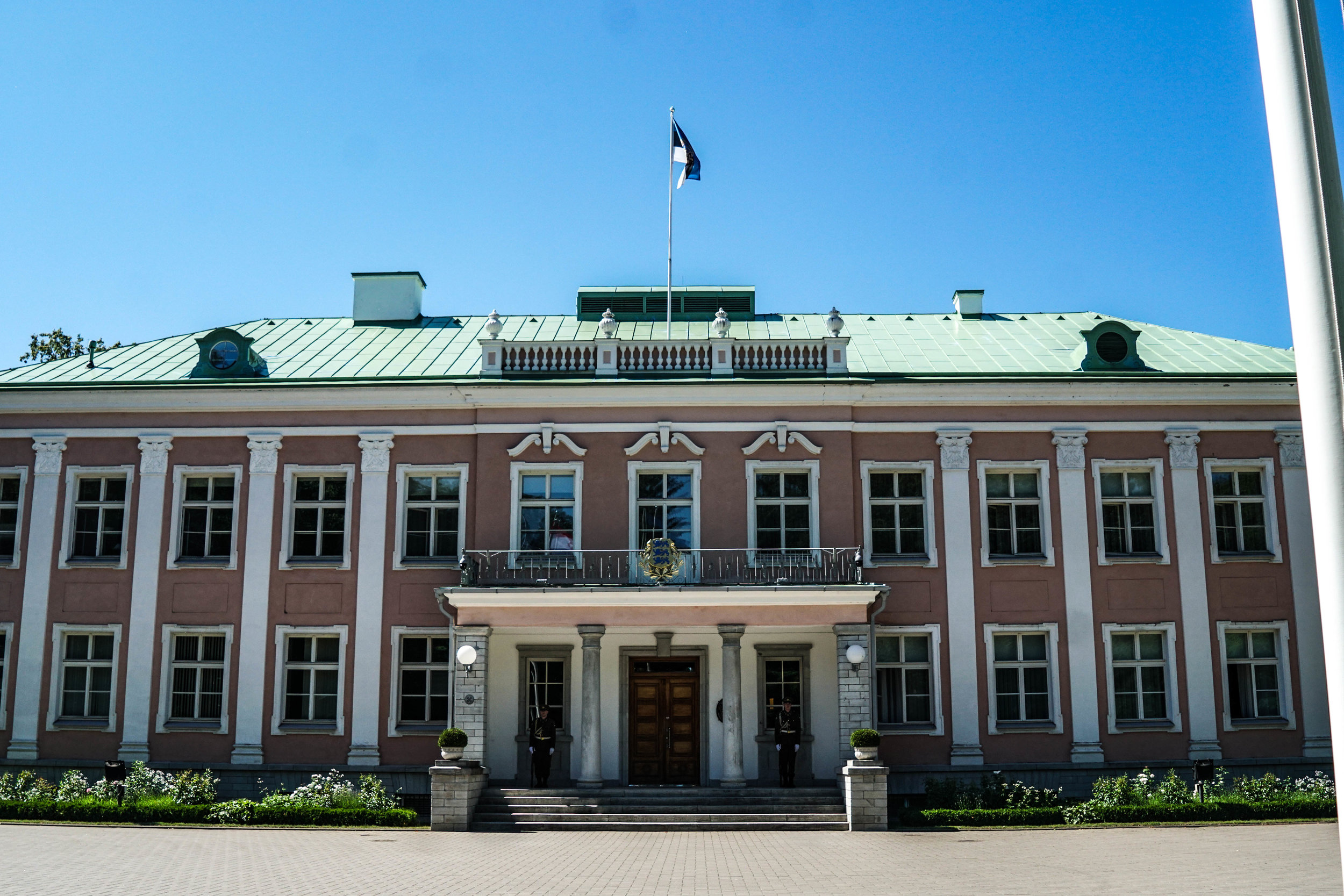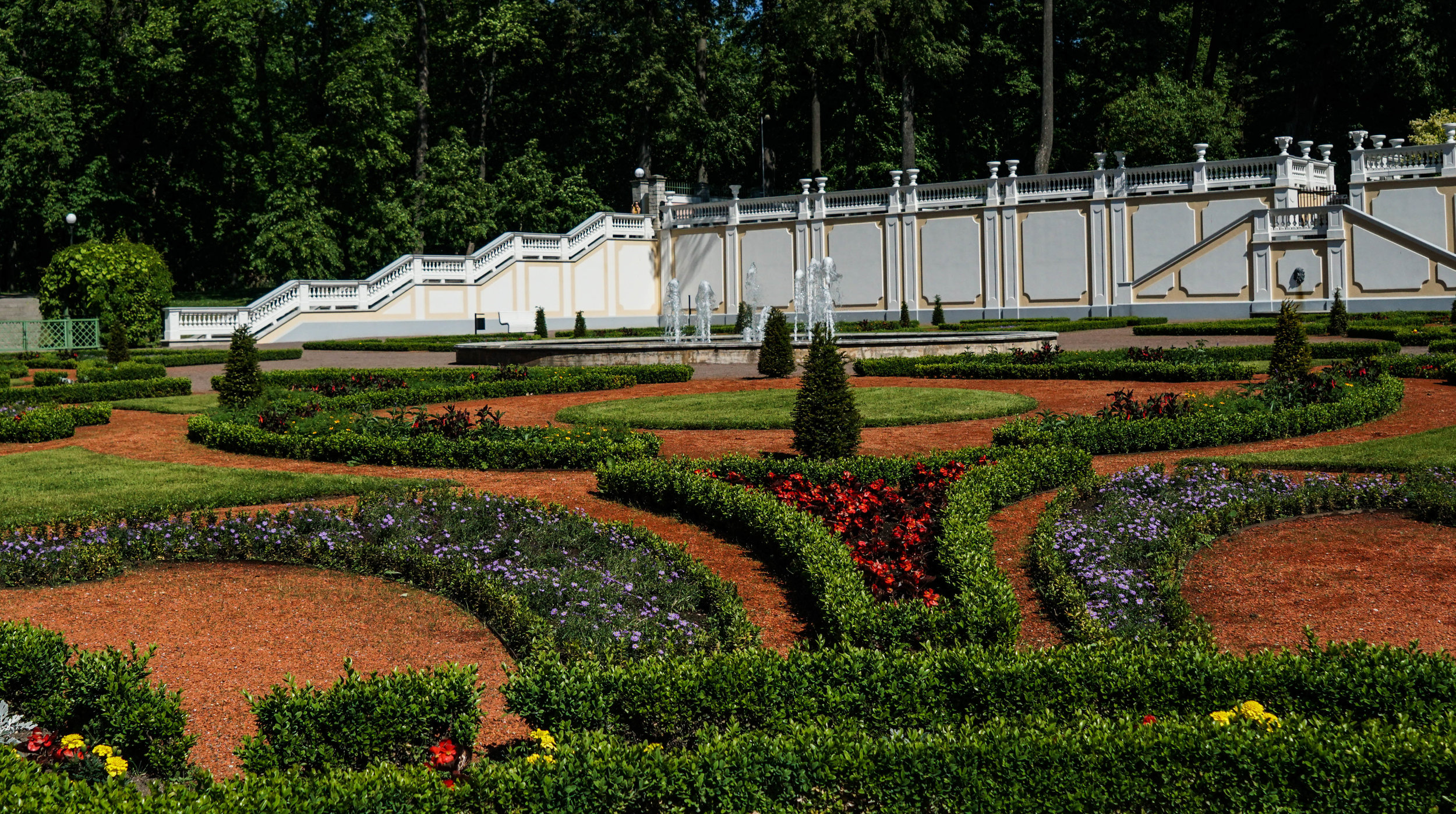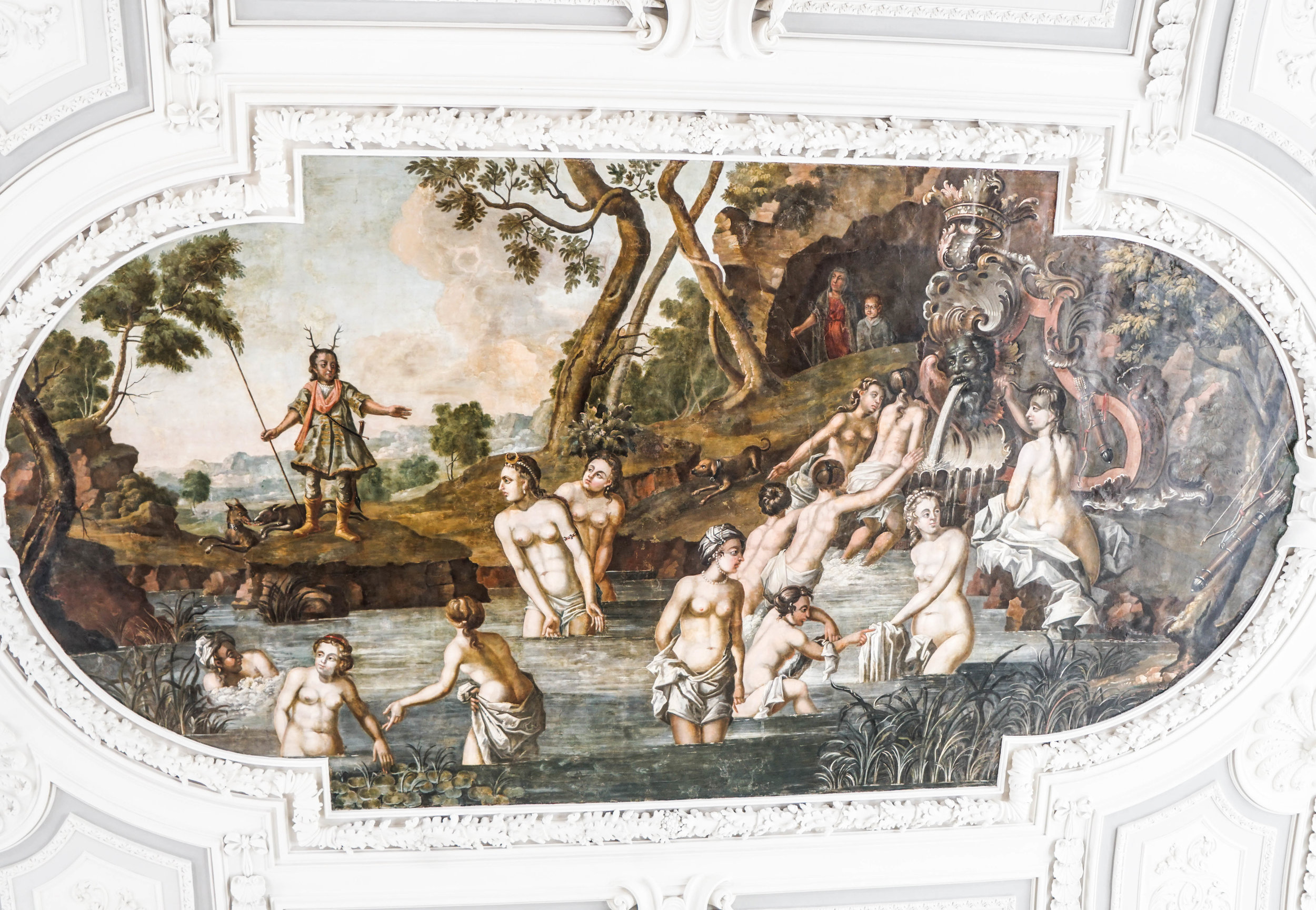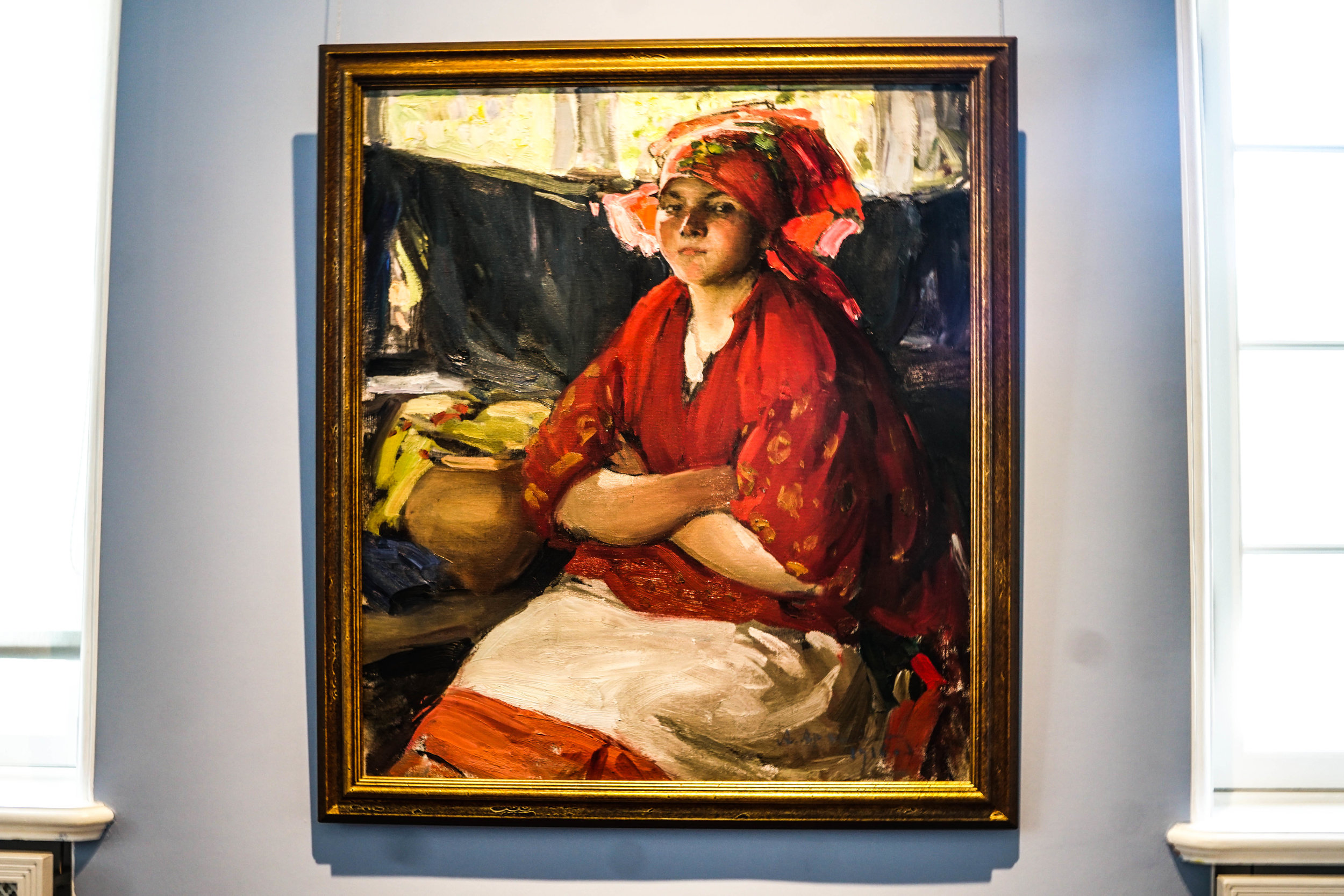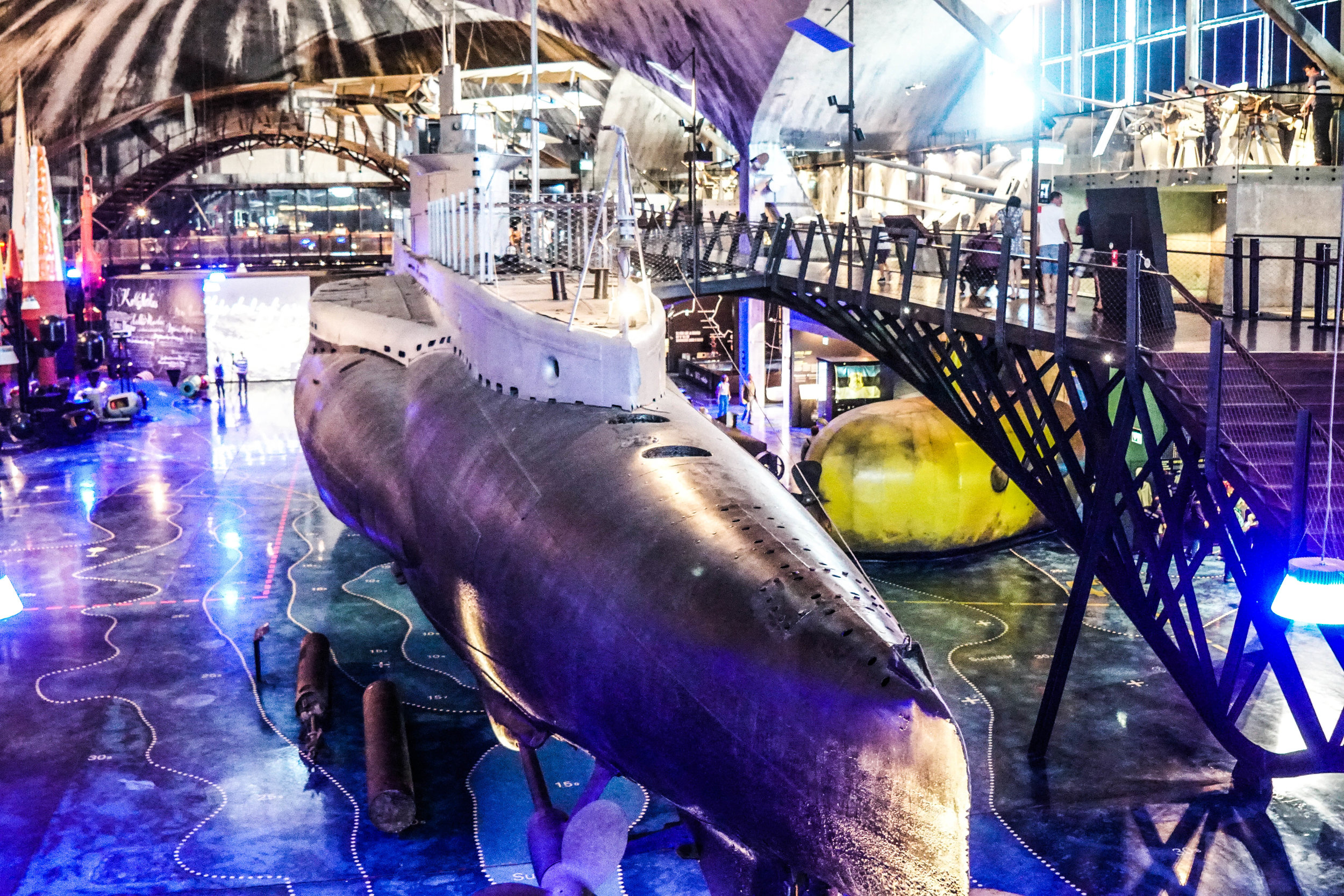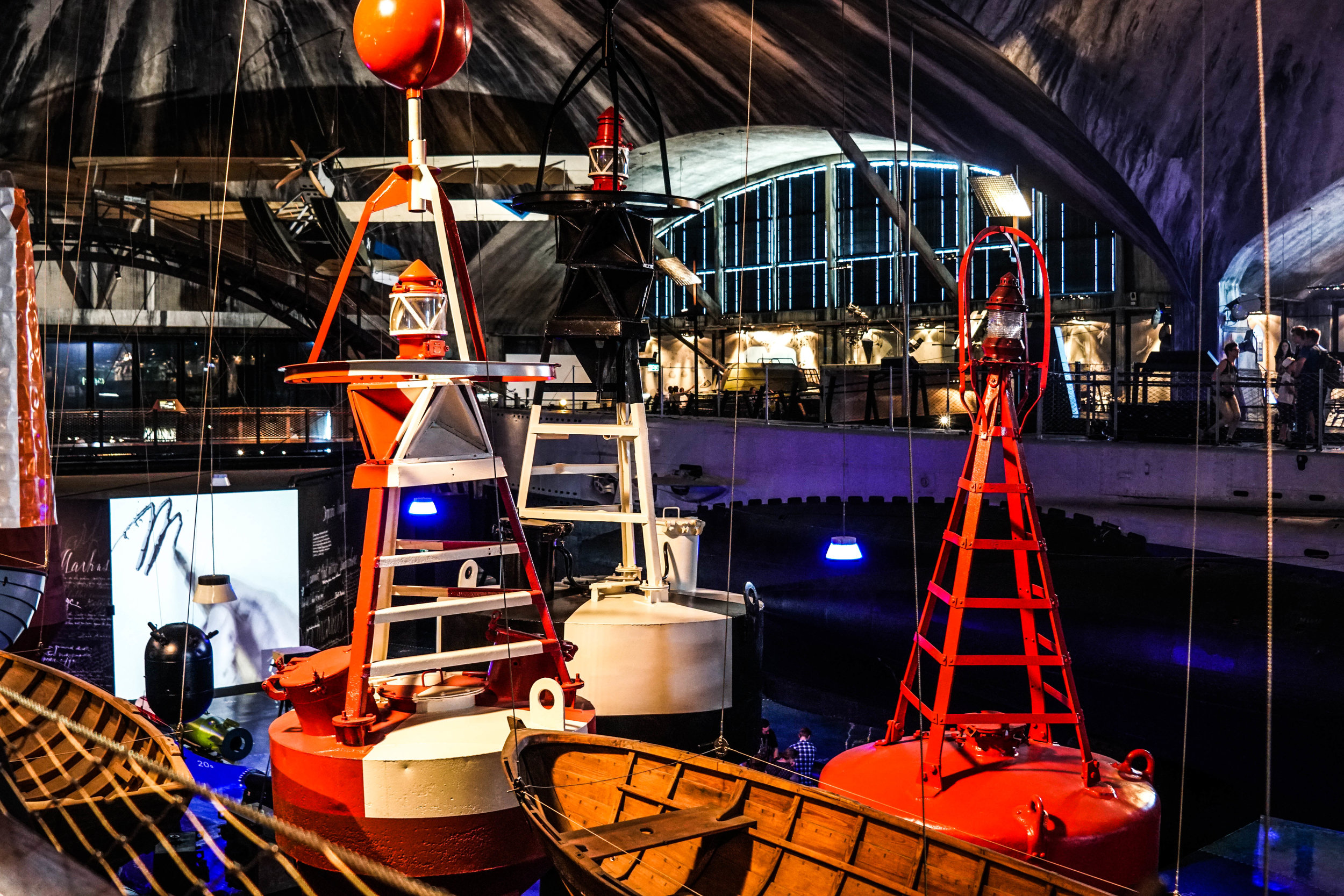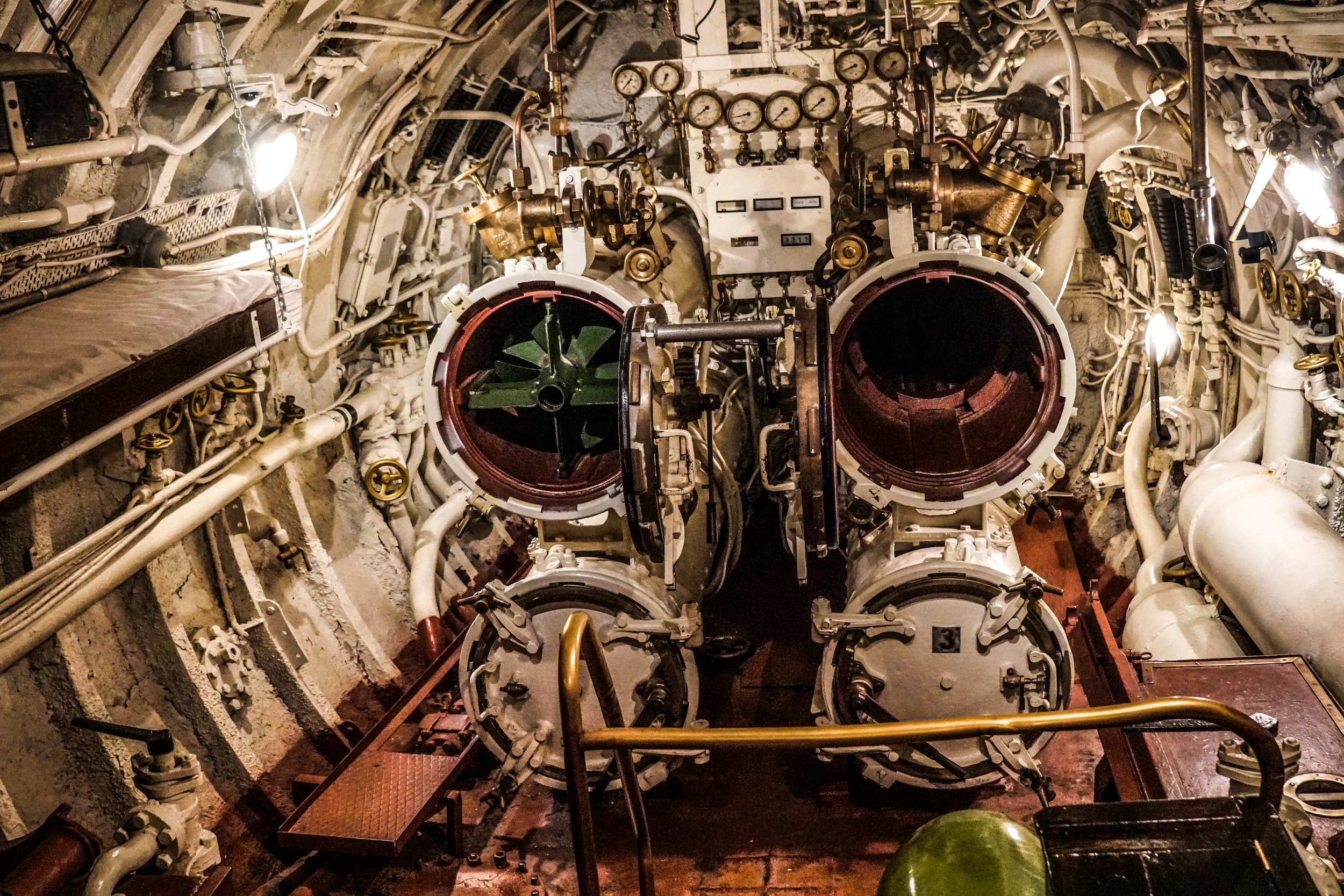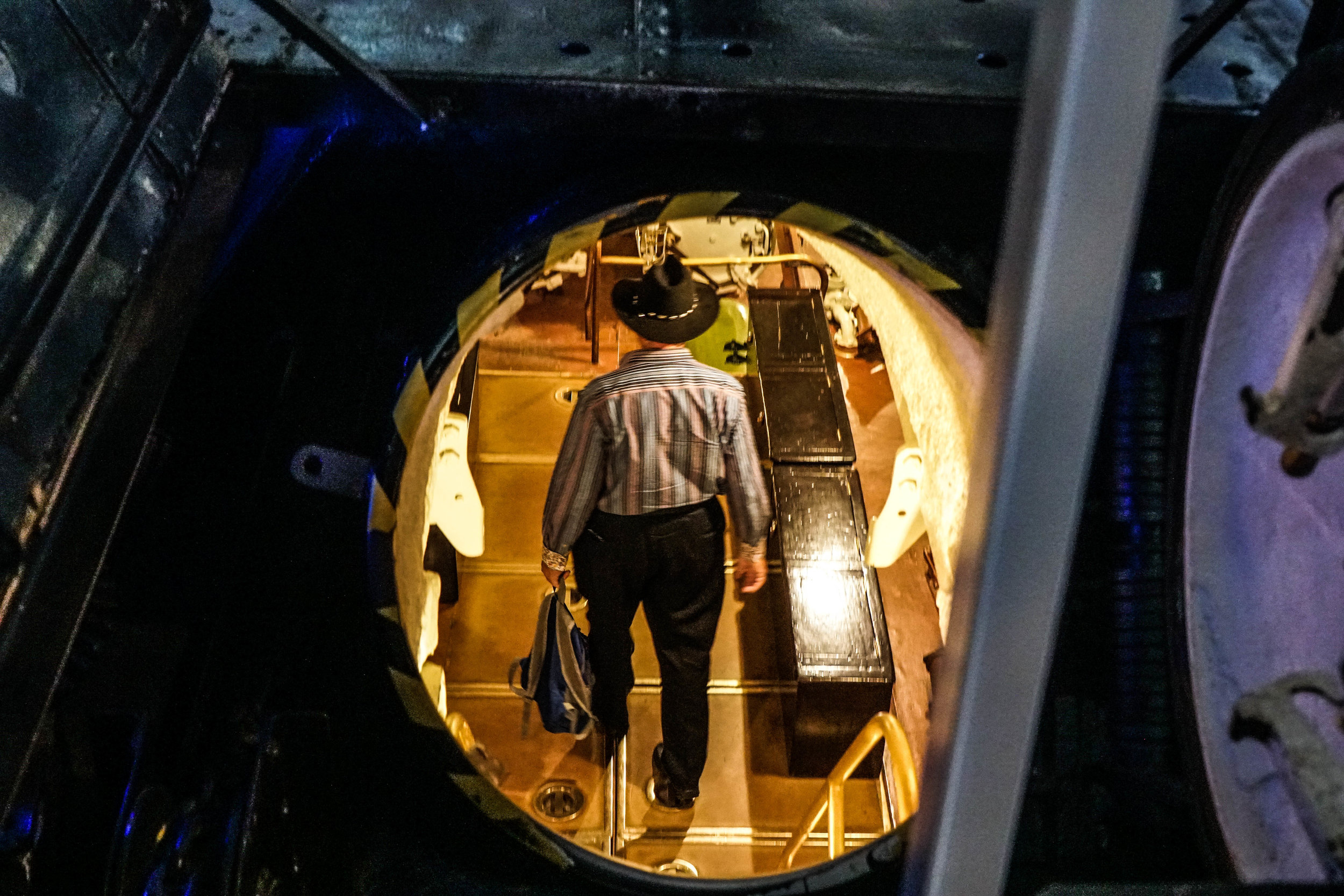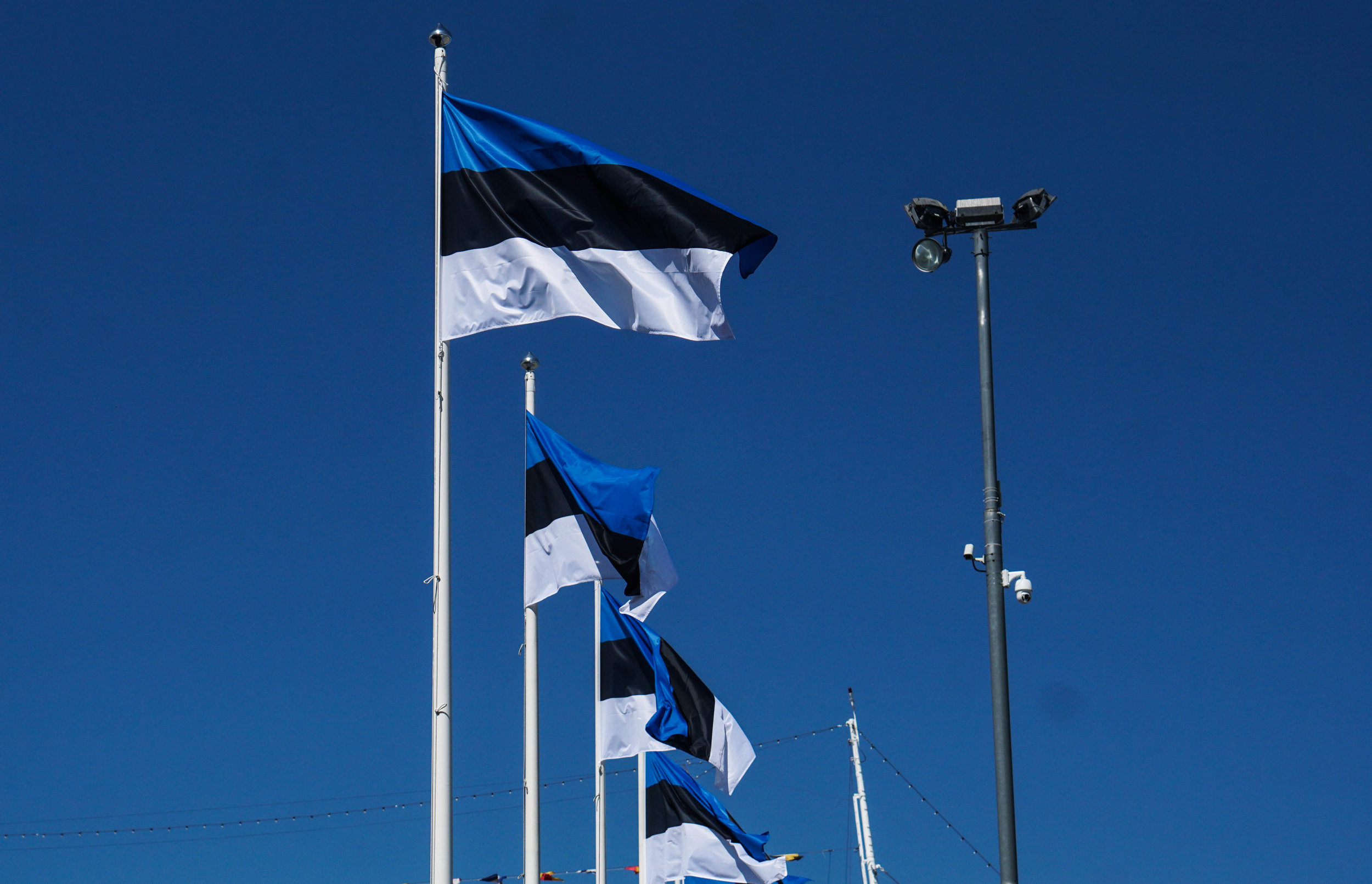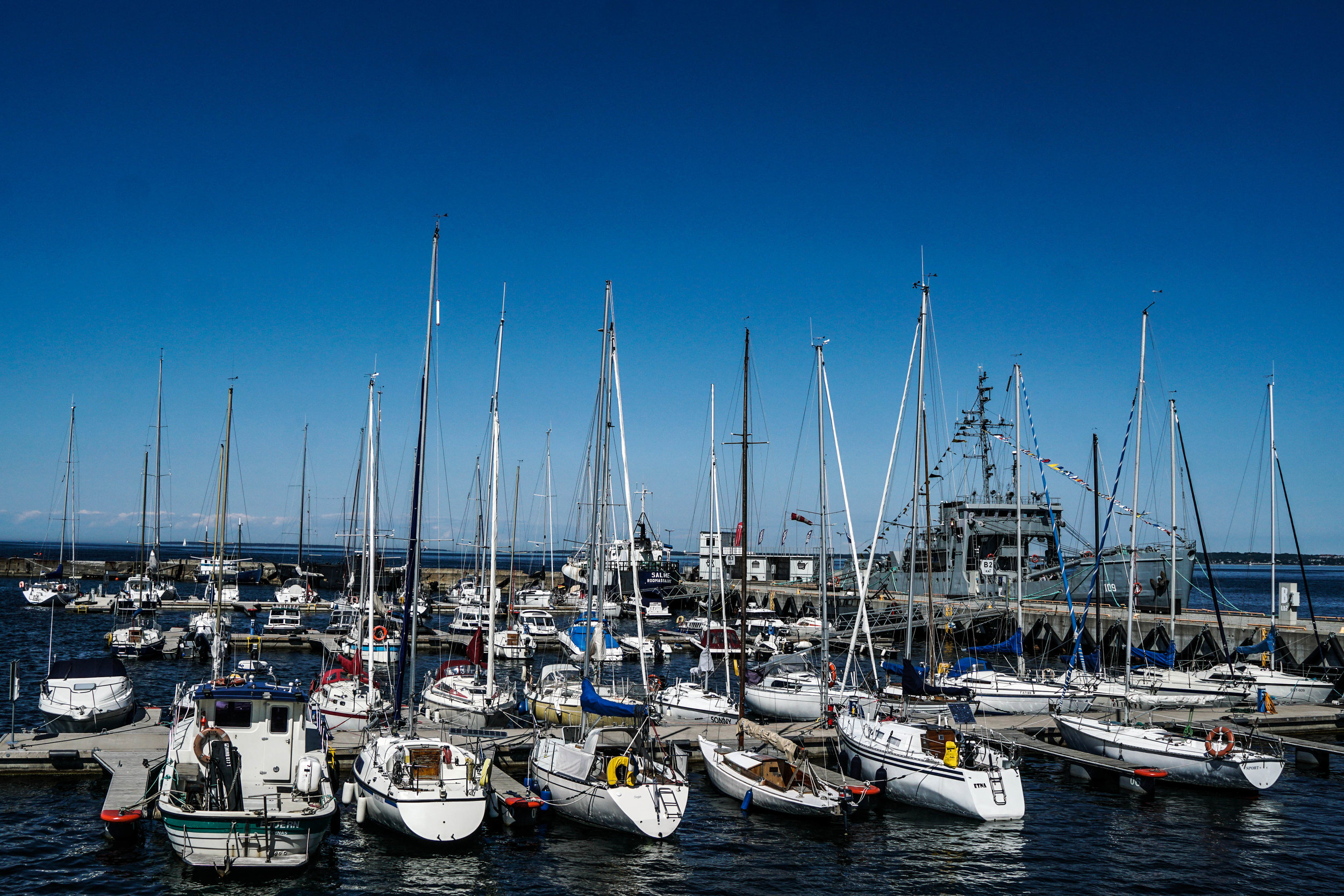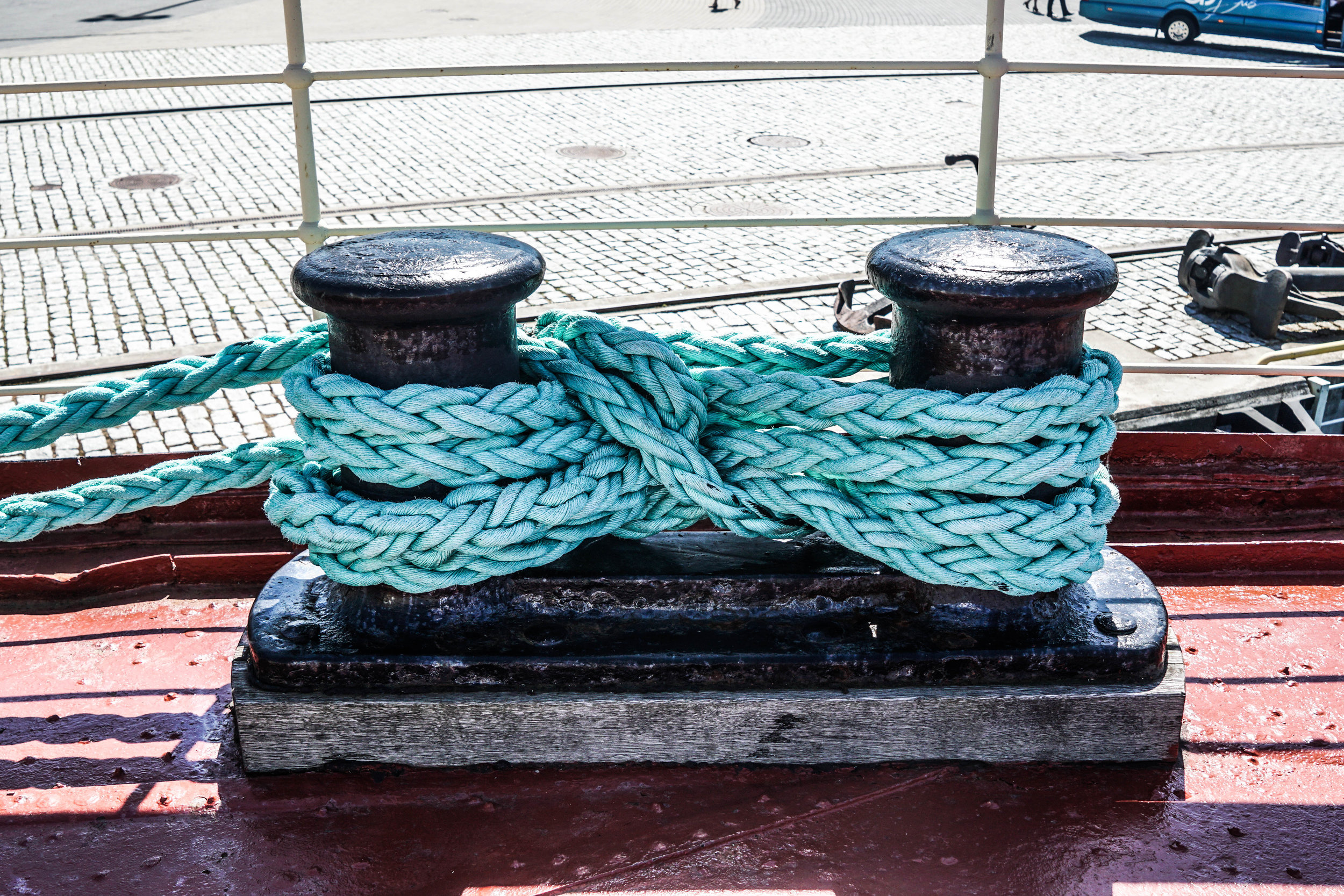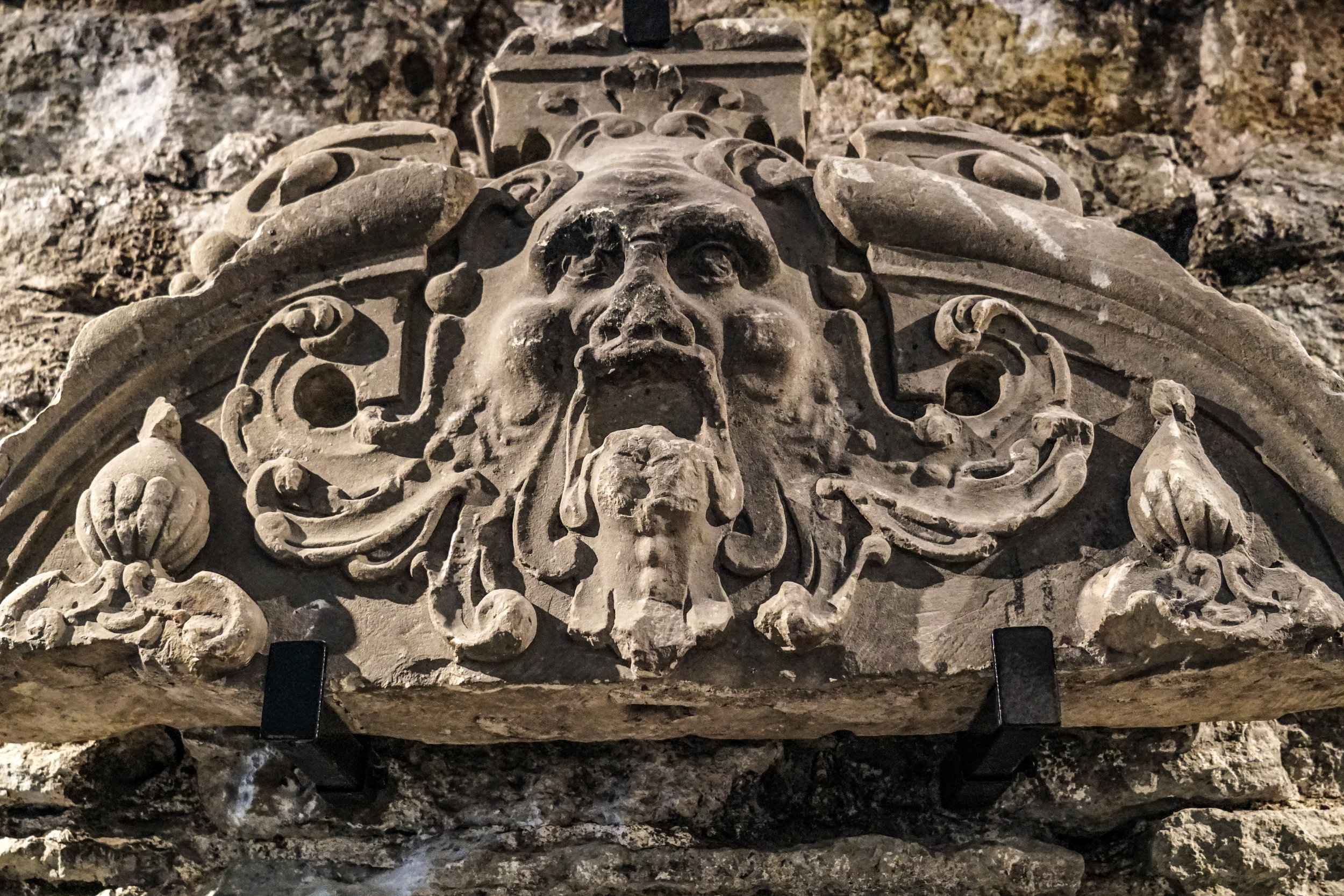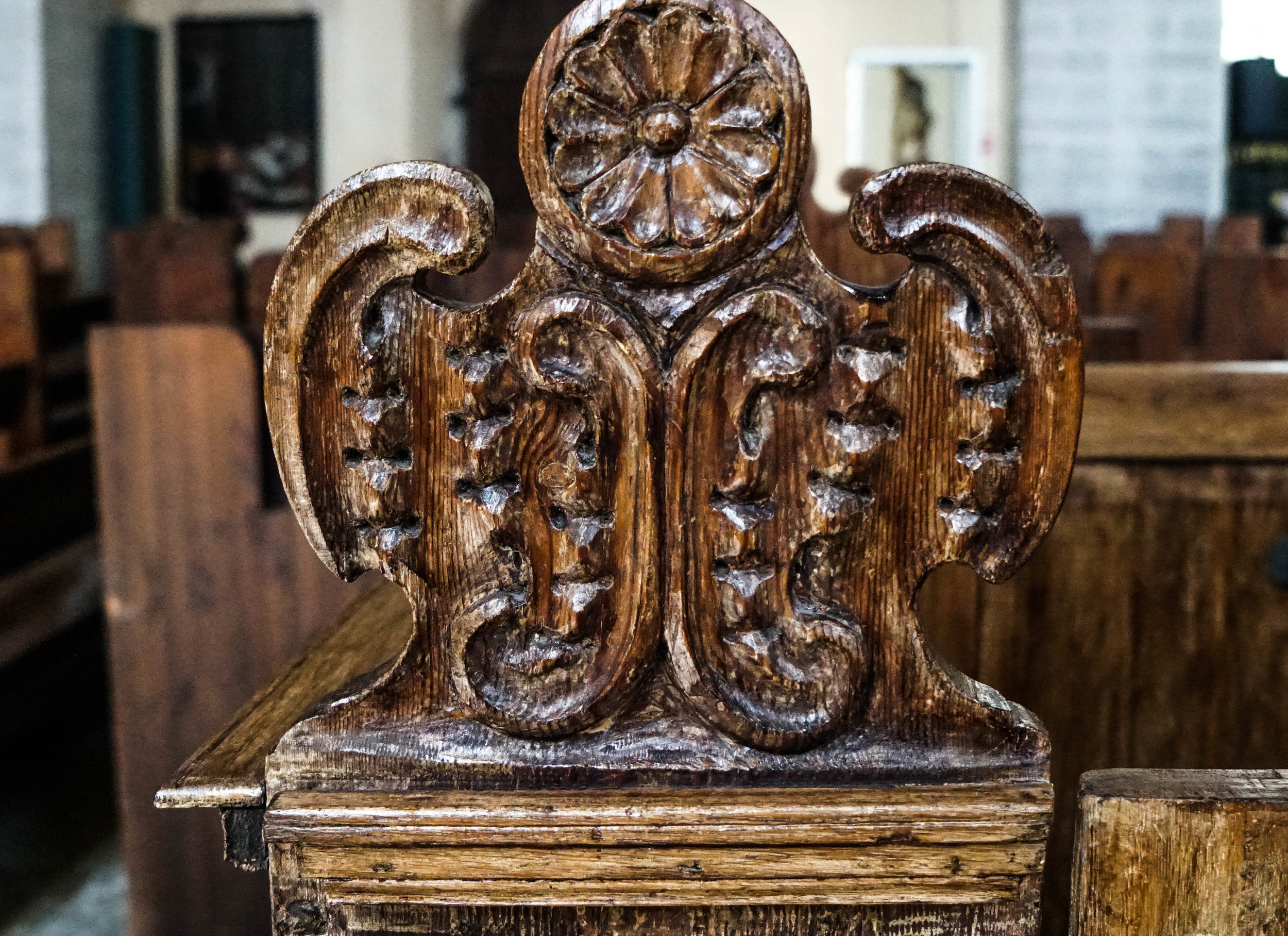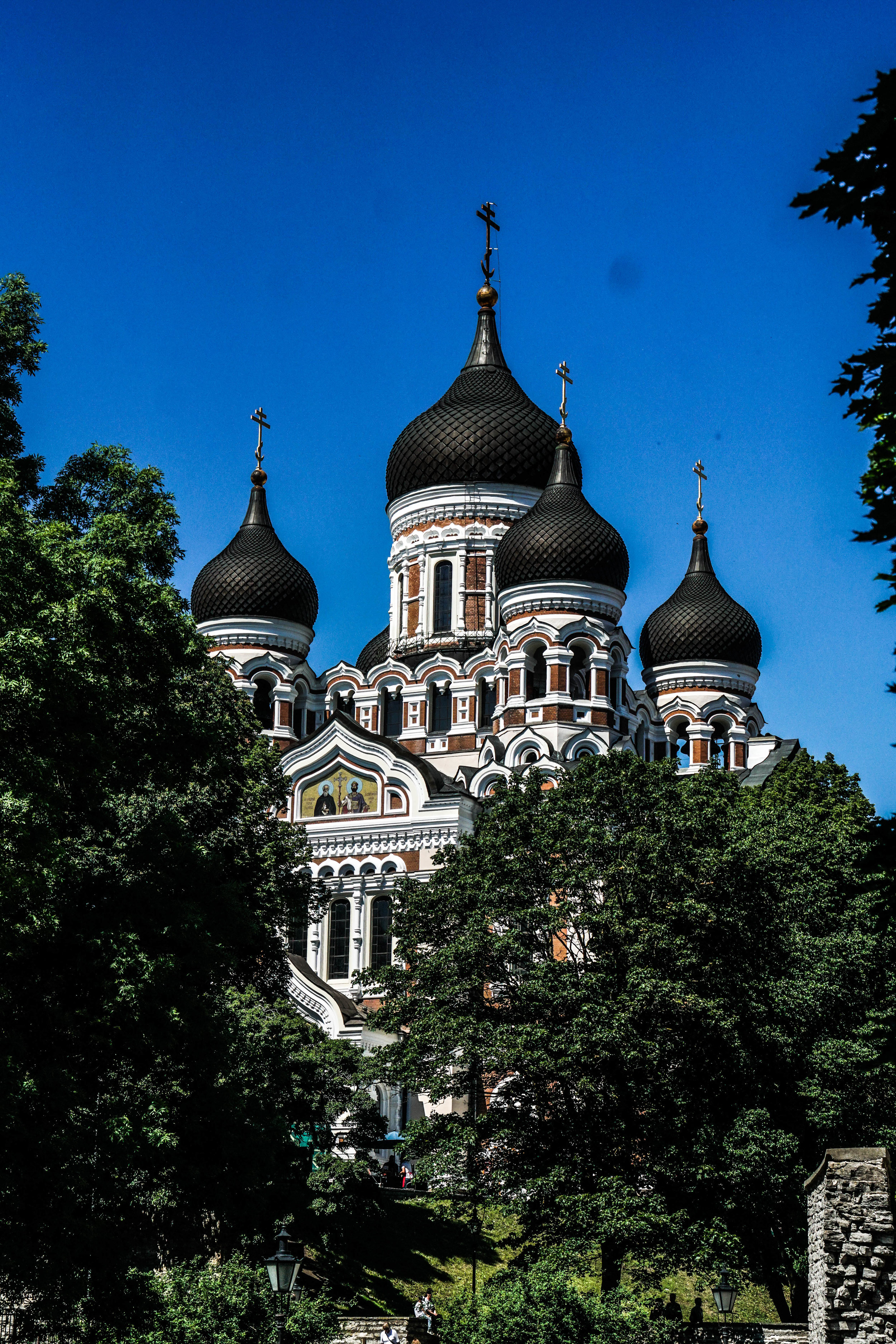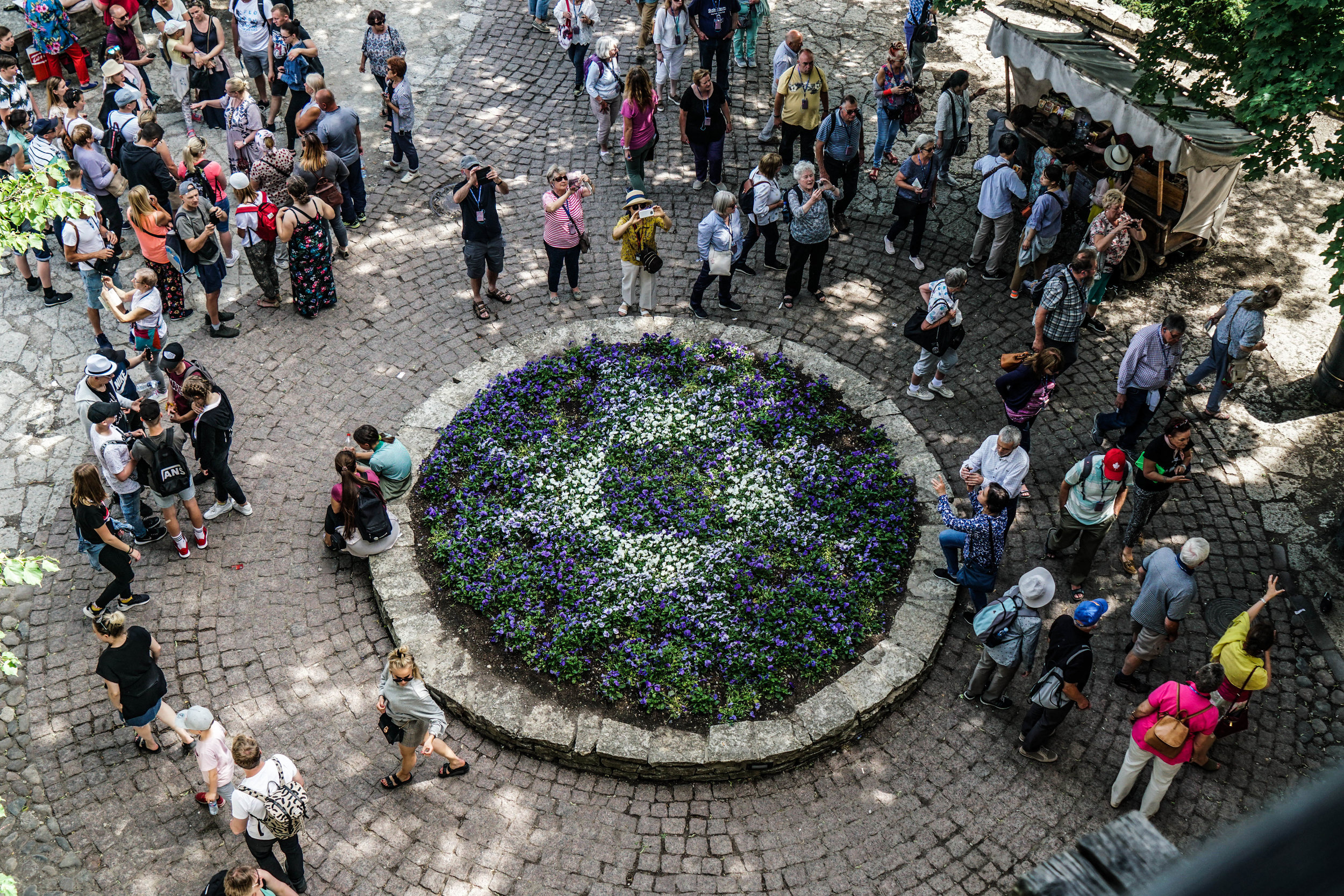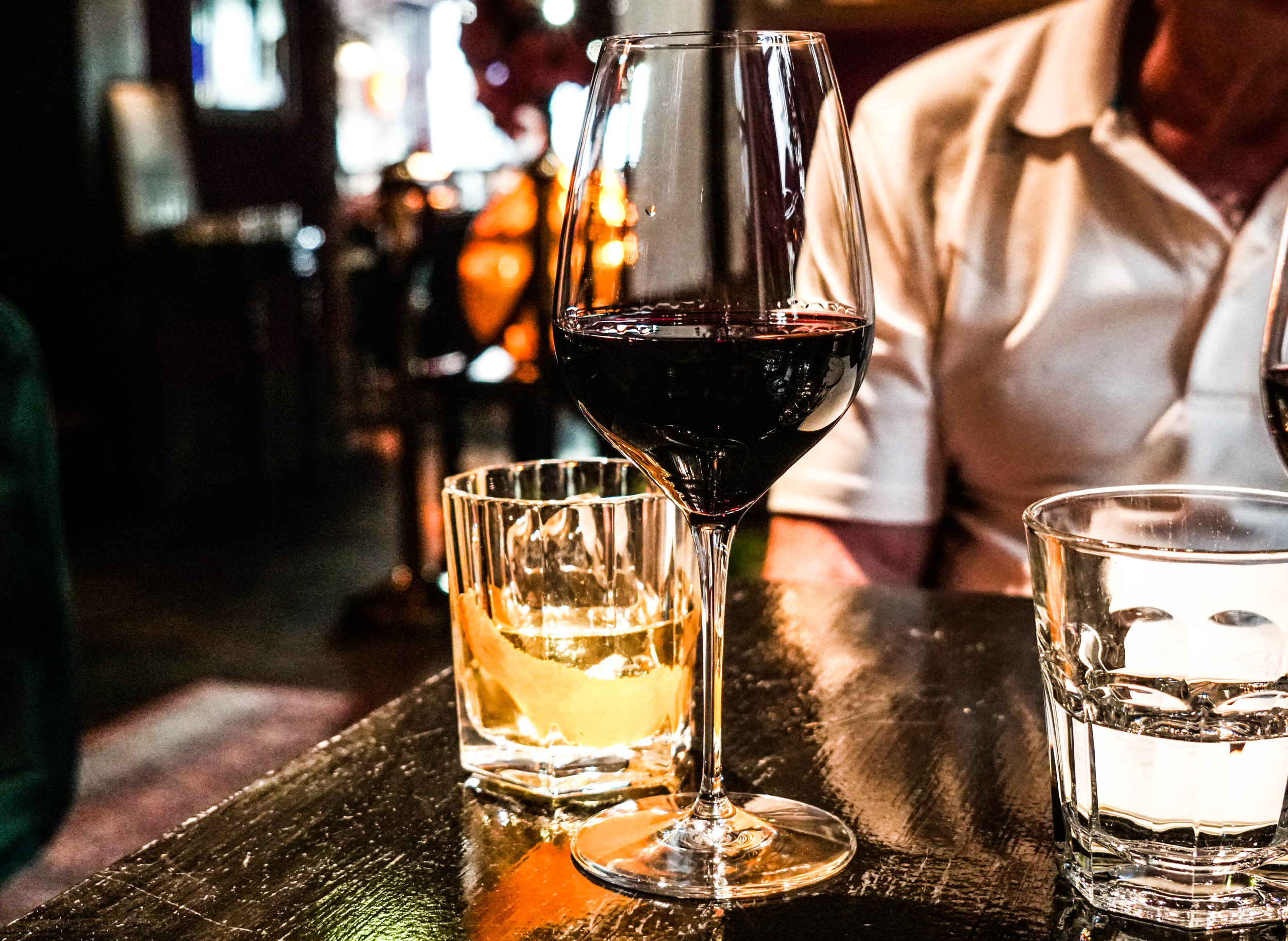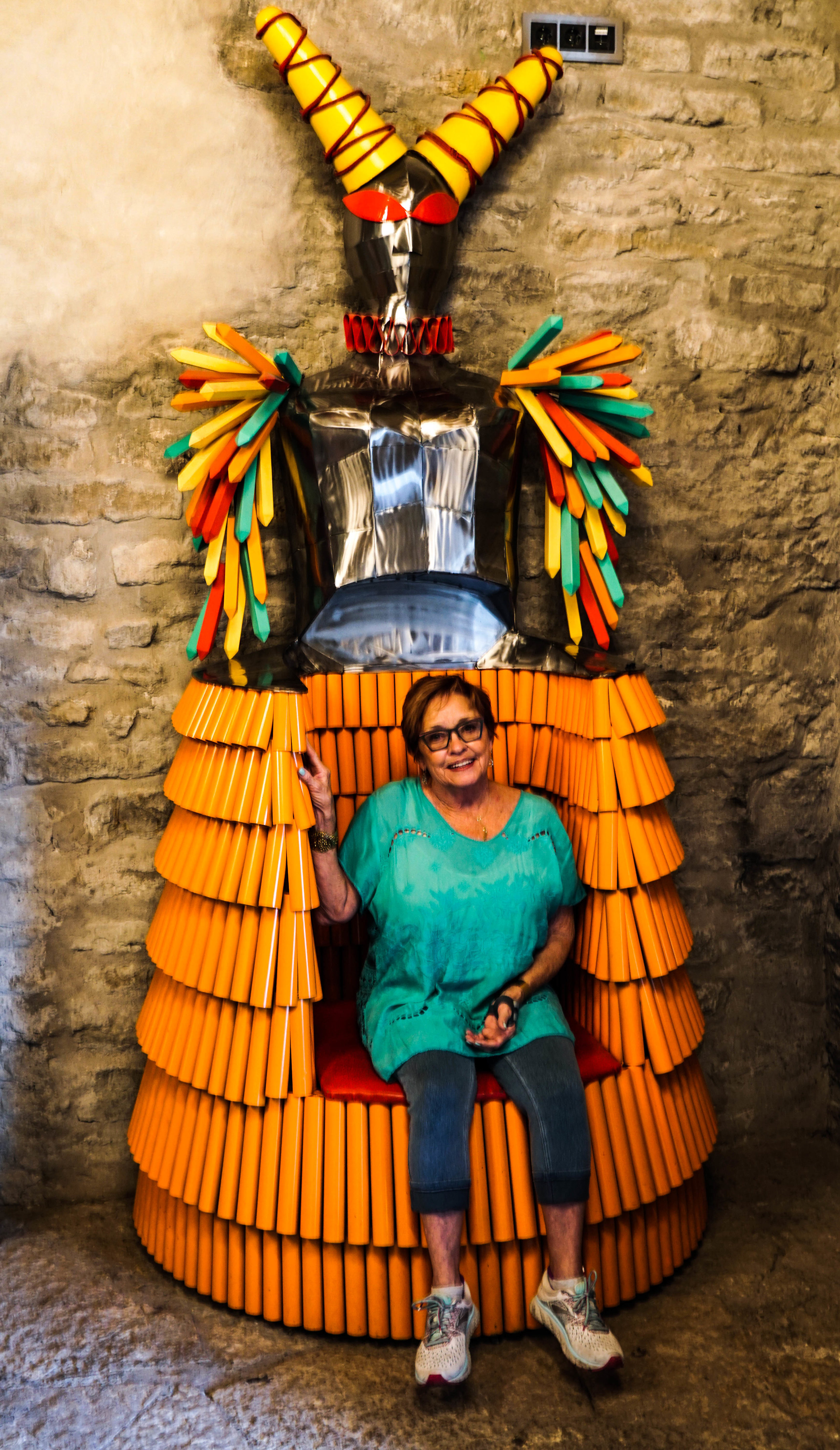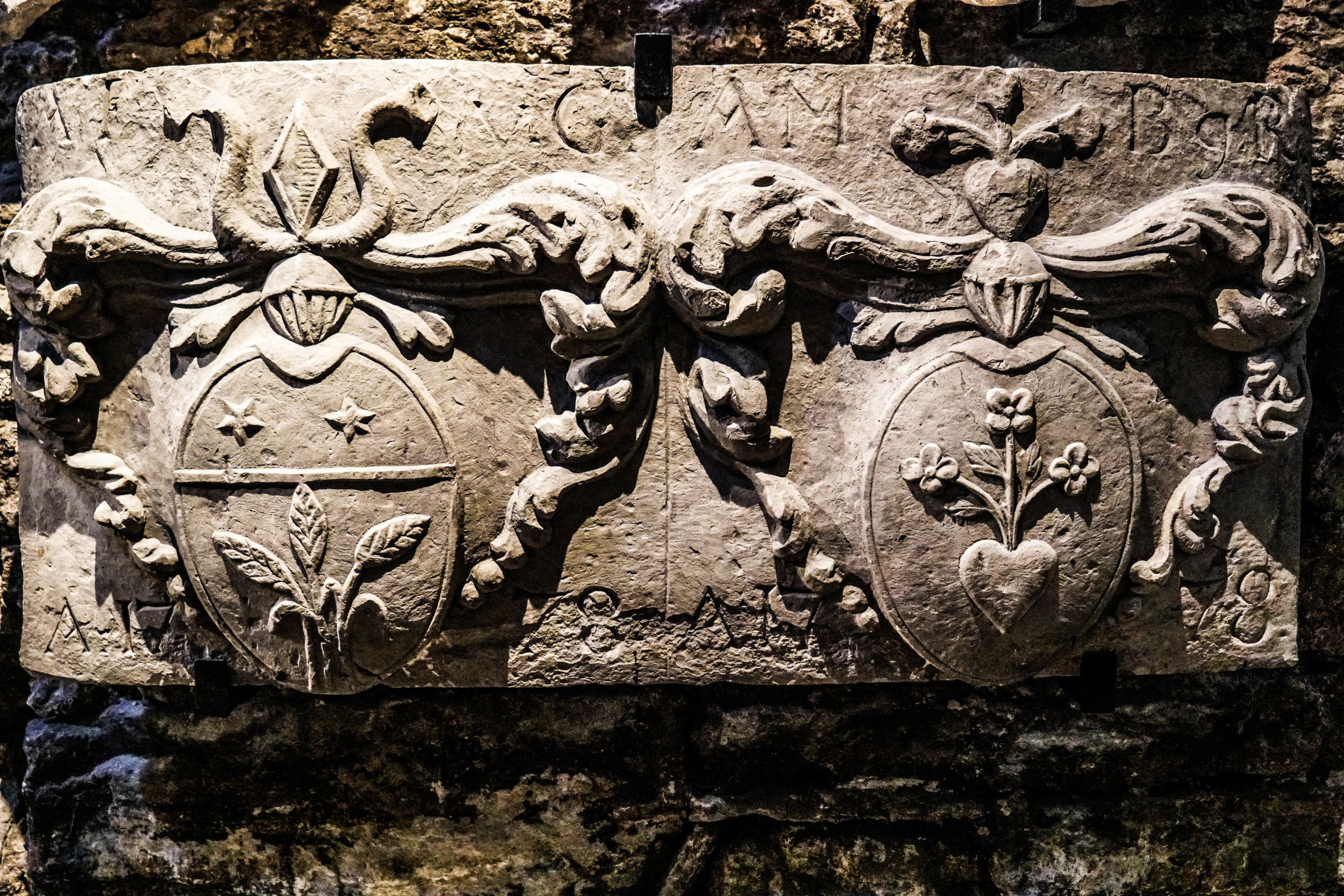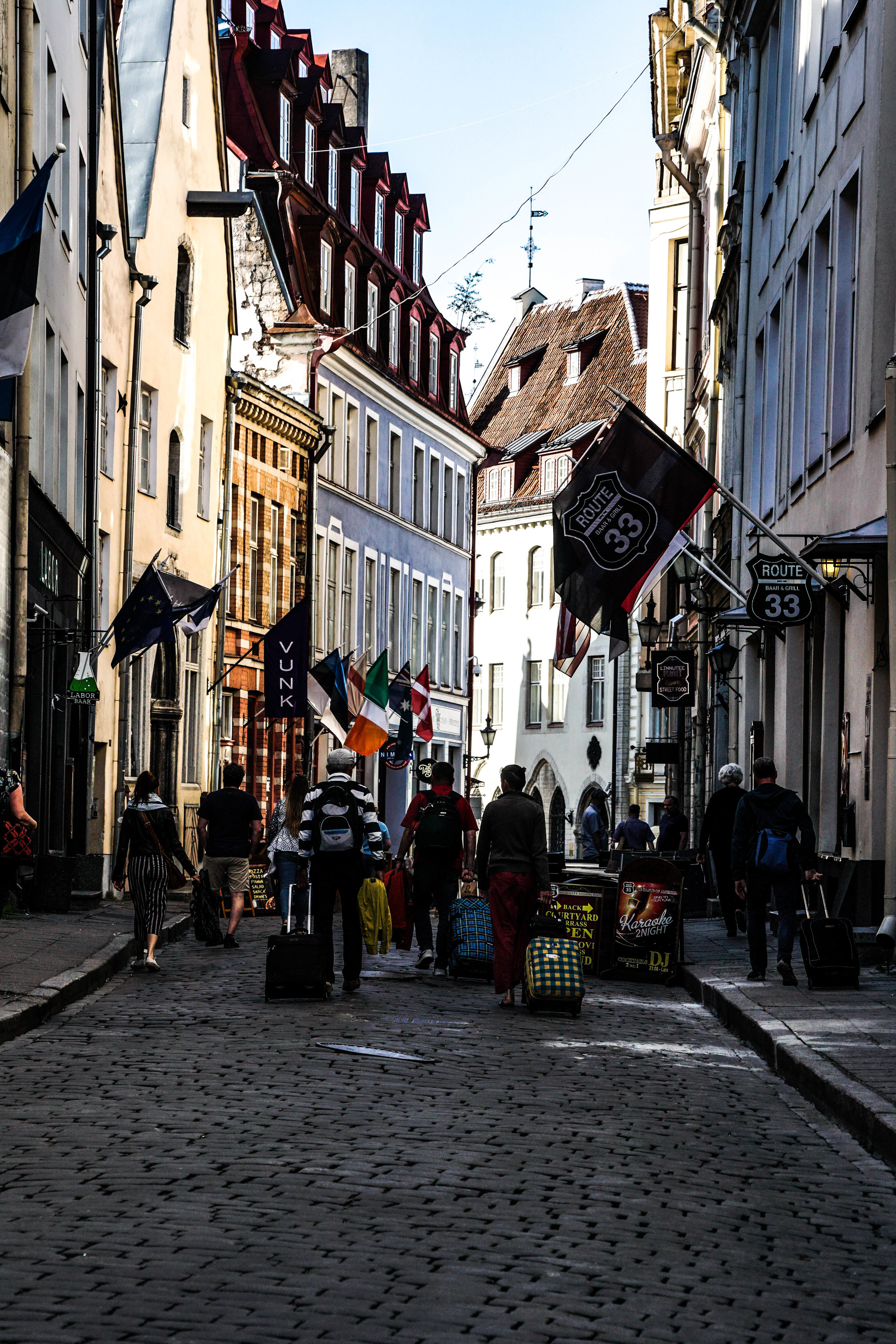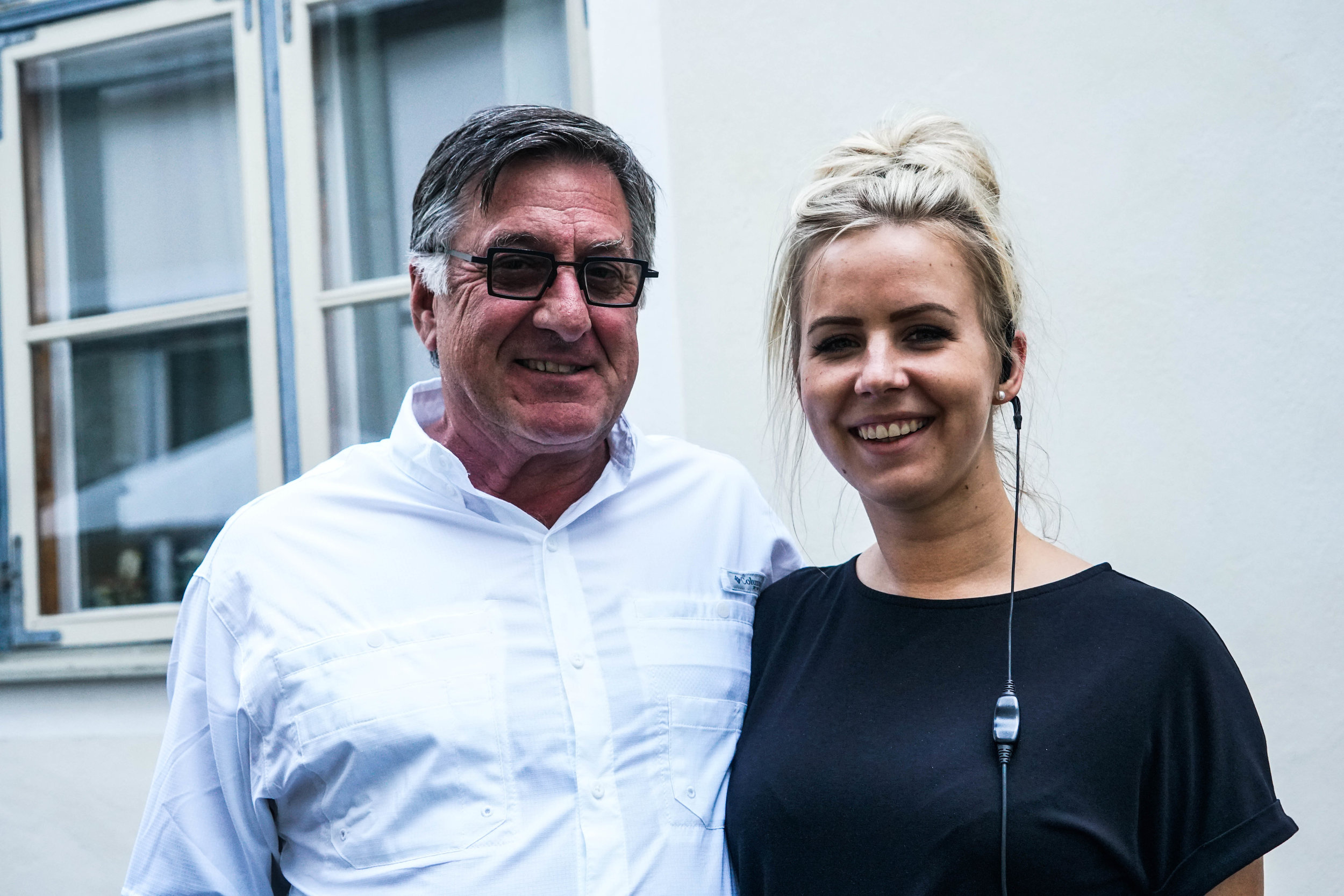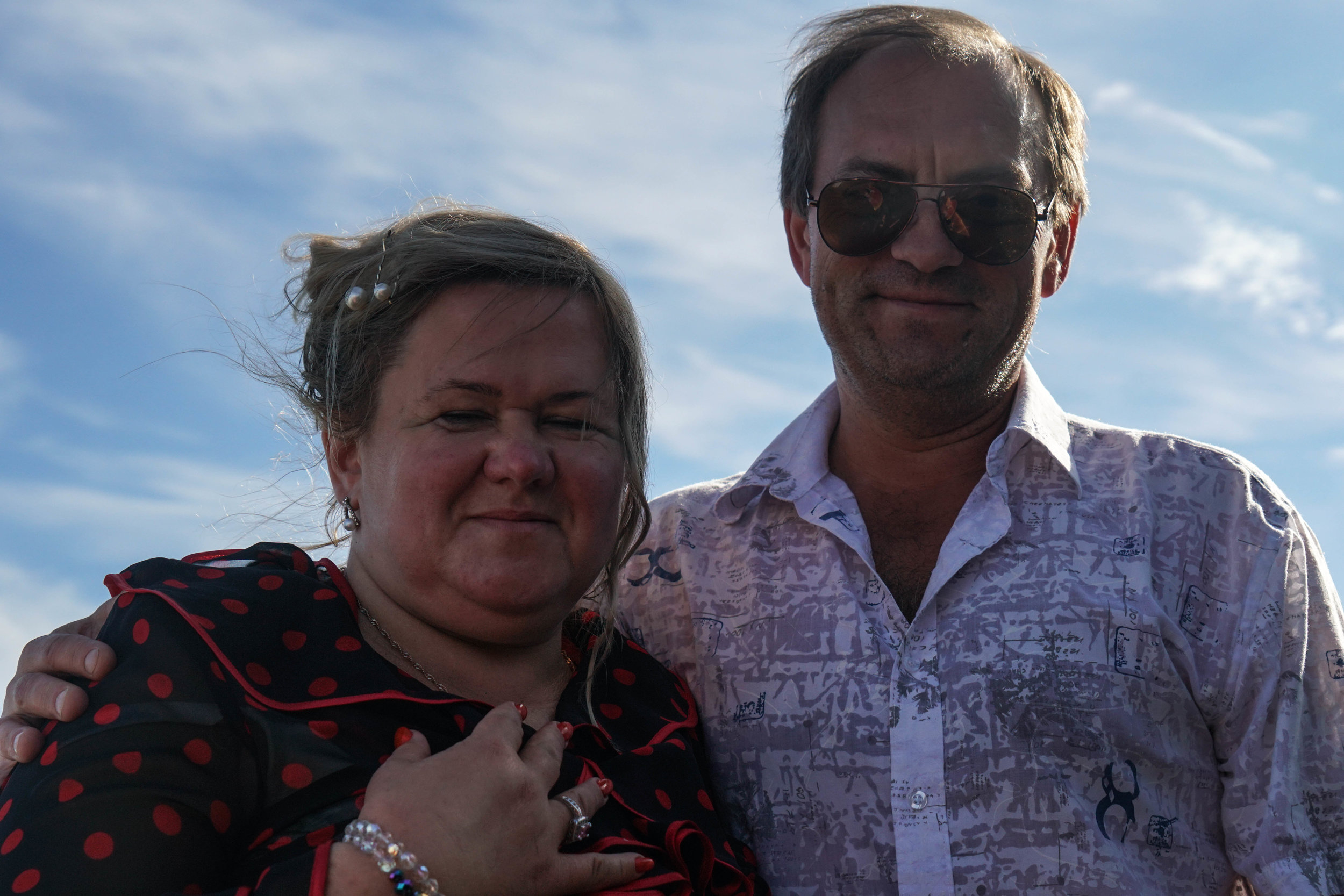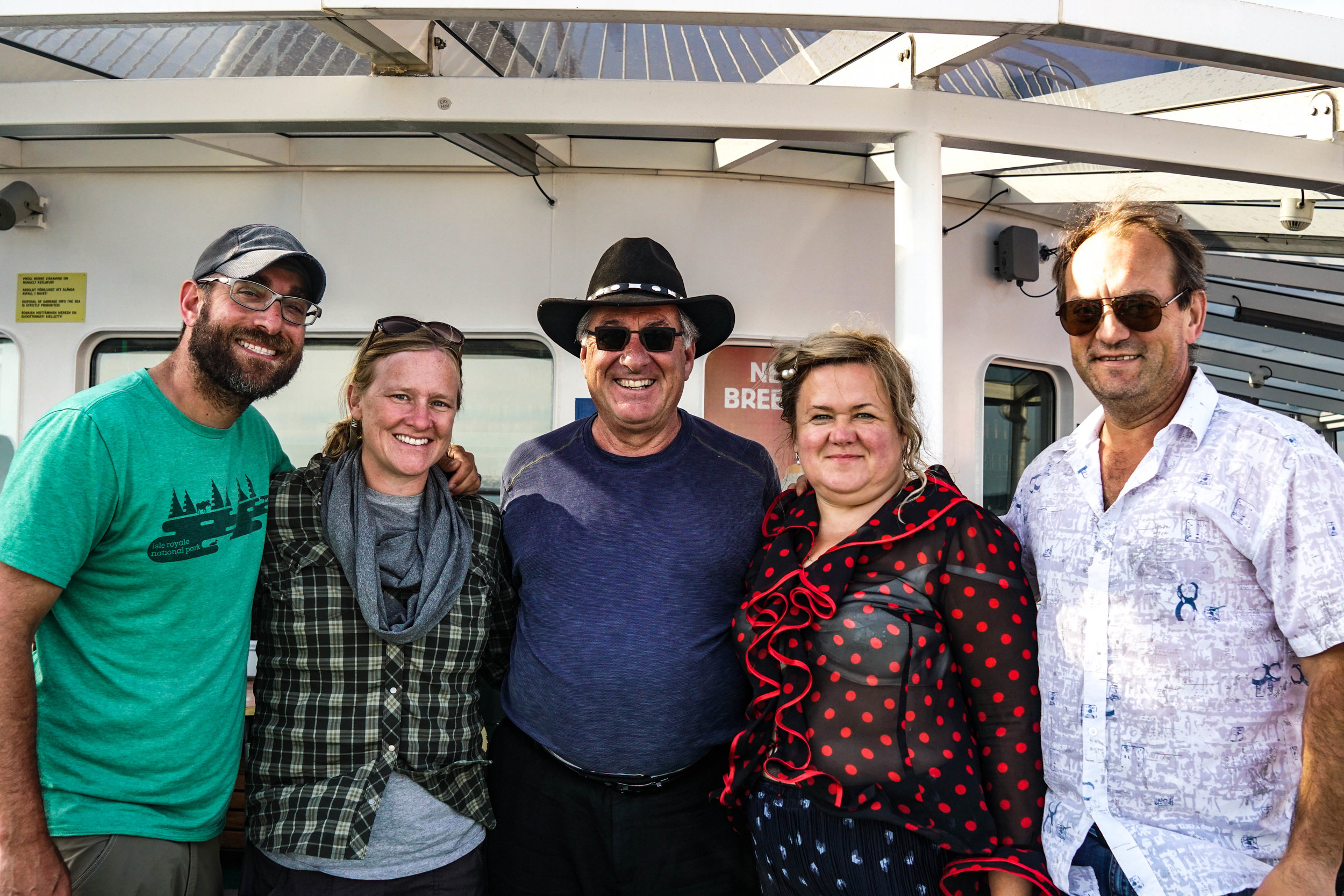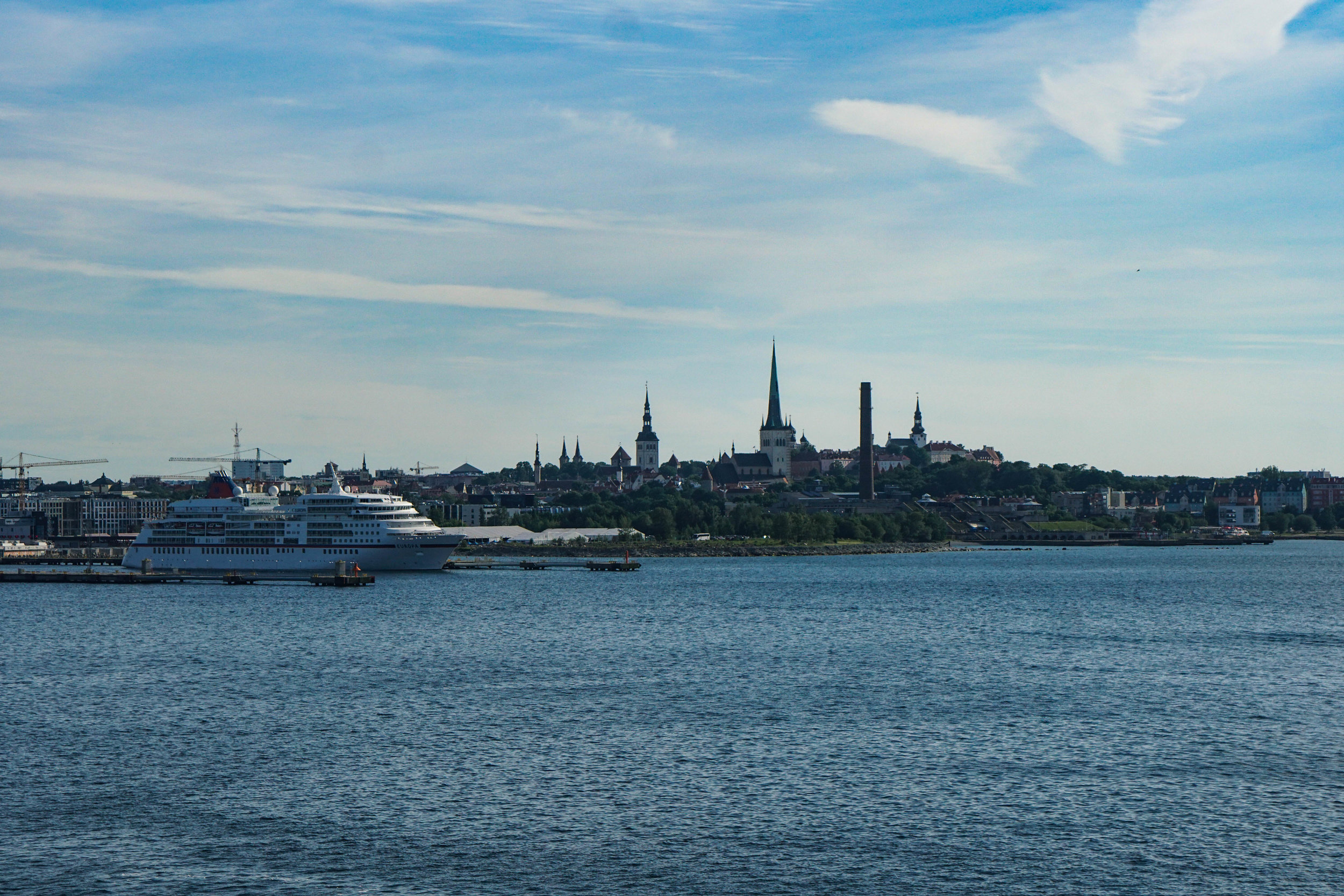Tallinn, Estonia, Glorious Medieval Town
Tower in the walled city.
Tallinn is an amazing city in a country that has struggled to be free. The city was originally organized as a chartered city by the Danes in the 1200’s. Later, after German occupation, two centuries of czarist Russian rule, and finally integration into the Soviet Union, Estonia, a tiny country on the Baltic Sea, had a peaceful exit from the Soviet Union and is now a free country, a member of the EU and NATO.
The walled old town, still 95% intact with 26 watchtowers each topped by a pointy red roof, is a treasure to explore. Start at the top of the hill for the benefit of easier walking. We did this accidentally, starting on the square with St. Mary’s Church, also known as the Dome Church, on Freedom Square. Actually, we walked through the square, up many steps and then walked all the way down to City Hall square. The division between the upper town and the lower town relates to the origins of the town, when there were two separate towns, one for the wealthy and one for the craftsmen and tradesmen. The peasants lived outside the wall.
Fabulous vistas await you as you walk on the walls and through the streets. On our first day, we wandered and found the Church of St. Nicholas damaged by German bombing in WWII, now a museum. We enjoyed lunch in Town Hall Square, complete with a Saturday festival featuring an interesting musical performance. For several days we explored the town, visiting museums, churches and galleries, enjoying glorious weather. One of our favorite museums was the Kiek in de Kok. It includes an underground tour of the walls where the Estonian people took refuge during the bombing in World War II. We also explored the tower and walked on the inside wall. More sights to see include a beautiful Greek Orthodox church atop the hill called Troompea.
On another beautiful day, we took a bus out to the Kumu Museum, The Museum’s modernist building won architectural awards for design when it was built. Works in the museum include an impressive collection of Estonian art, a very interesting exhibit of art created during the Soviet era, as well as a modern collection. Currently it is featuring an interesting clothing exhibit from the Soviet era. After visiting the Kumu, we walked down to Kadriorg Park. The gardens are beautifully manicured; the summer palace is home to the Kadriorg Art Collection.
Another interesting sight was the Museum at Seaplane Harbor. The maritime museum houses everything from wooden fishing boats to submarines. Paul loves boats and planes, so it was an awesome afternoon. Check out the pics of the place and my husband exploring another submarine!
Our visit to Tallinn was brief, but great. We had a delightful dinner at Rataskaevu 16 on our last night. The evening included Paul working with the bartender to make one of his favorite drinks, one also favored by my father, a Rusty Nail. He educated bartenders from Copenhagen through Sweden, Finland and Estonia. It was fun for him and he always made a new friend. We left Tallinn having made new friends Lesly and Annie from London, who provided us with suggestions for our last leg of this trip. Once on board our overnight cruise, we met a lovely couple from Belarus, who shared an embarkation toast with us, and an American couple Jody and Travis whom you can find on Facebook at The Wandering Campwagon.
Next stop Orebro, Sweden and on to Oslo.

